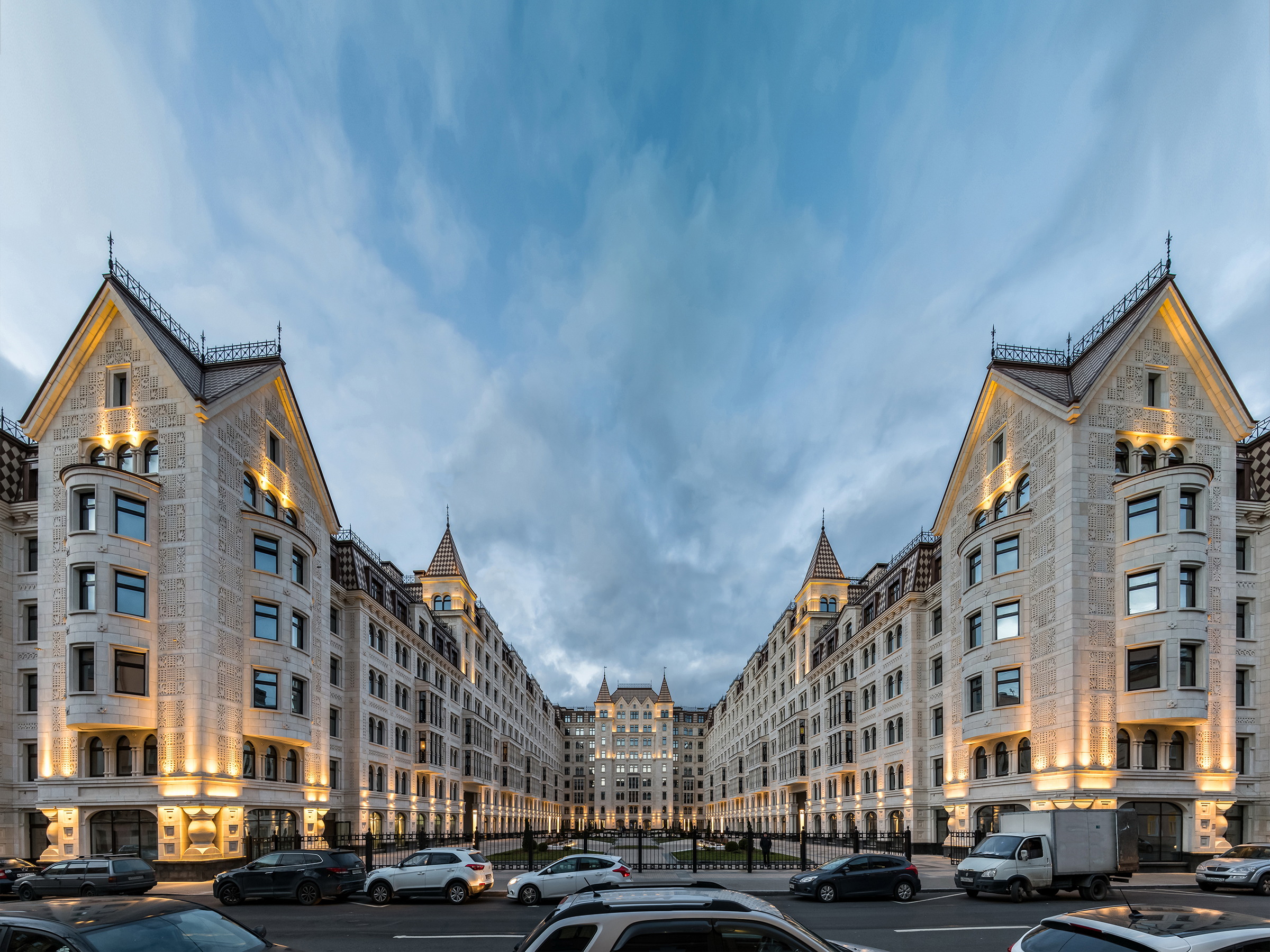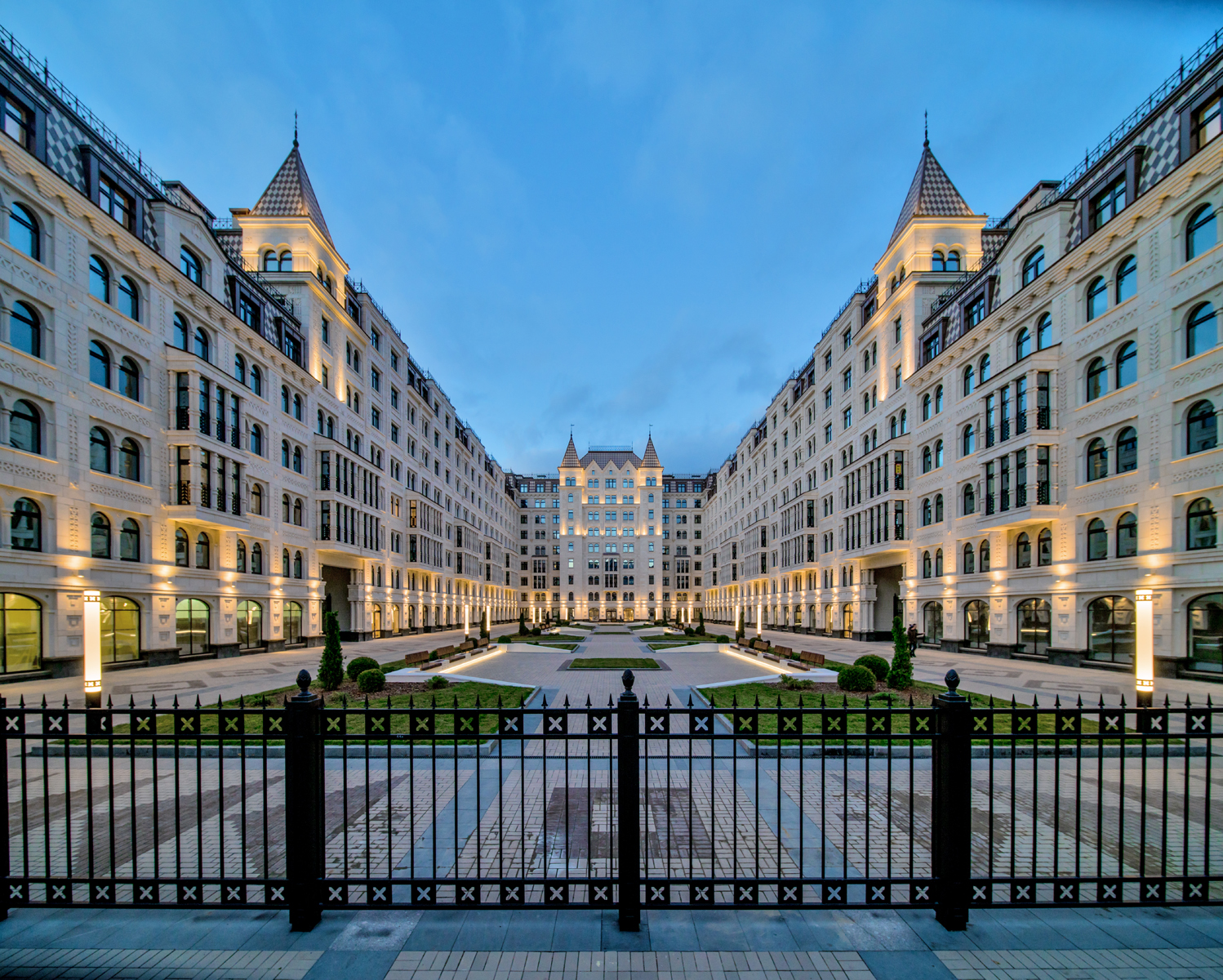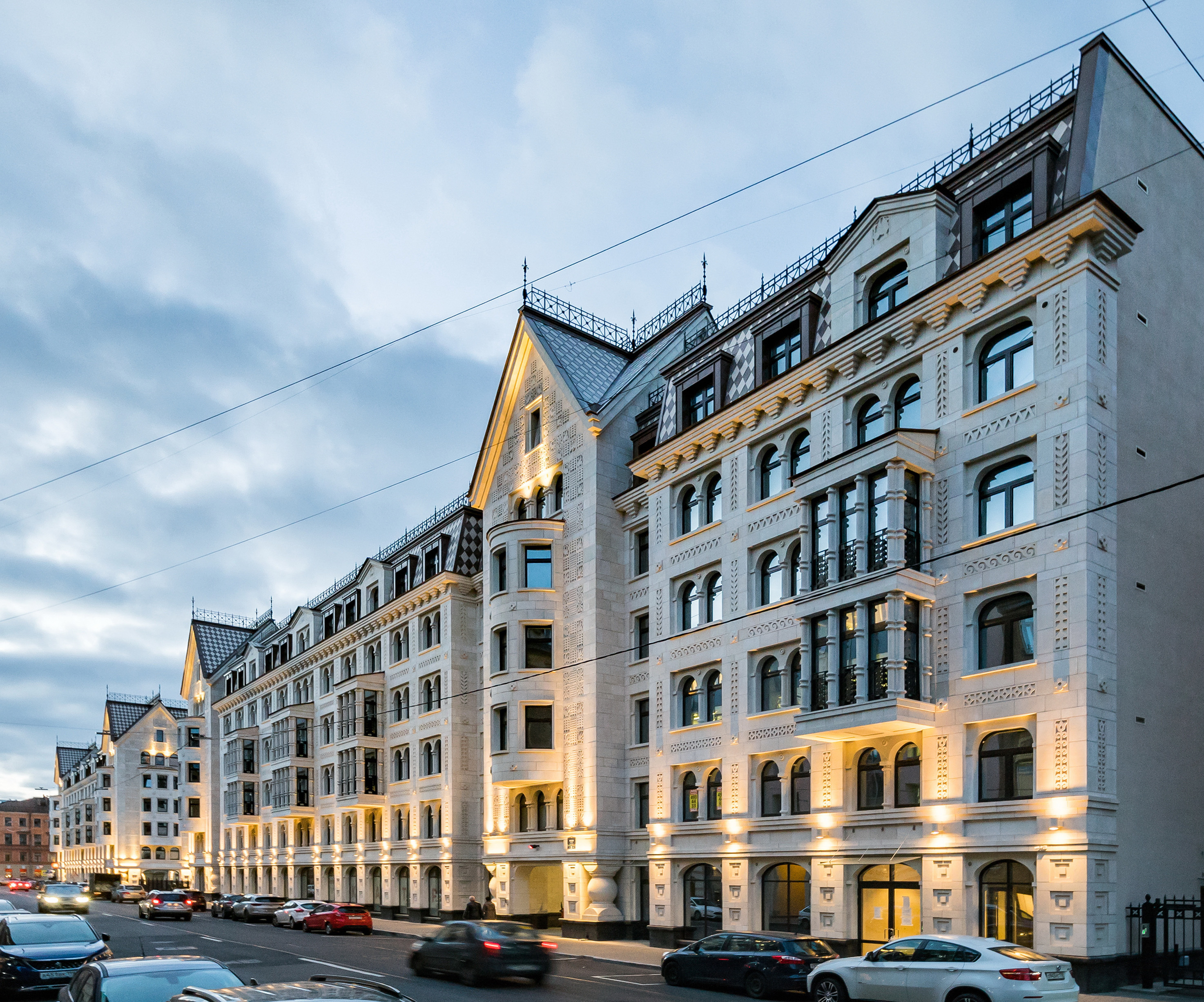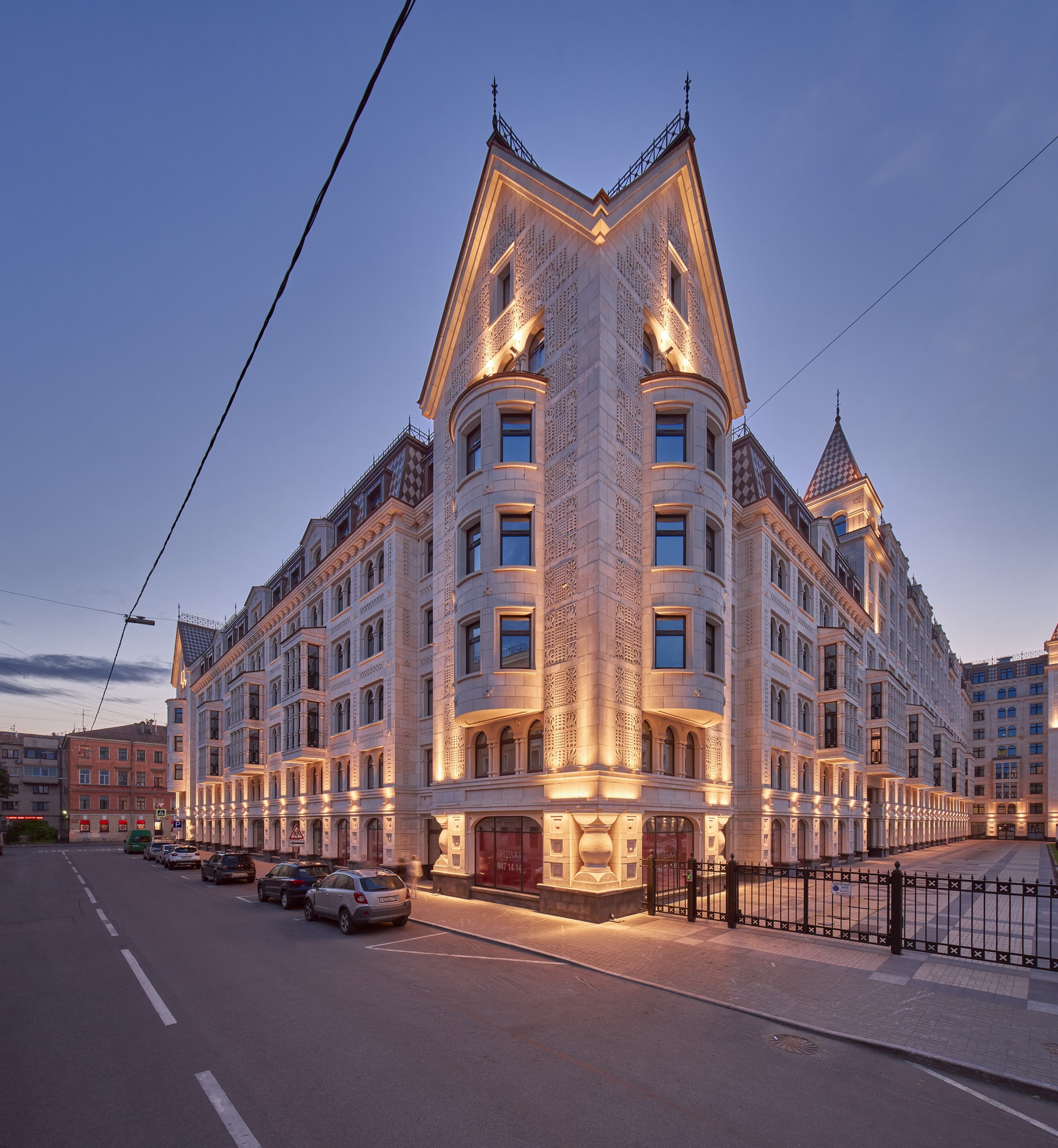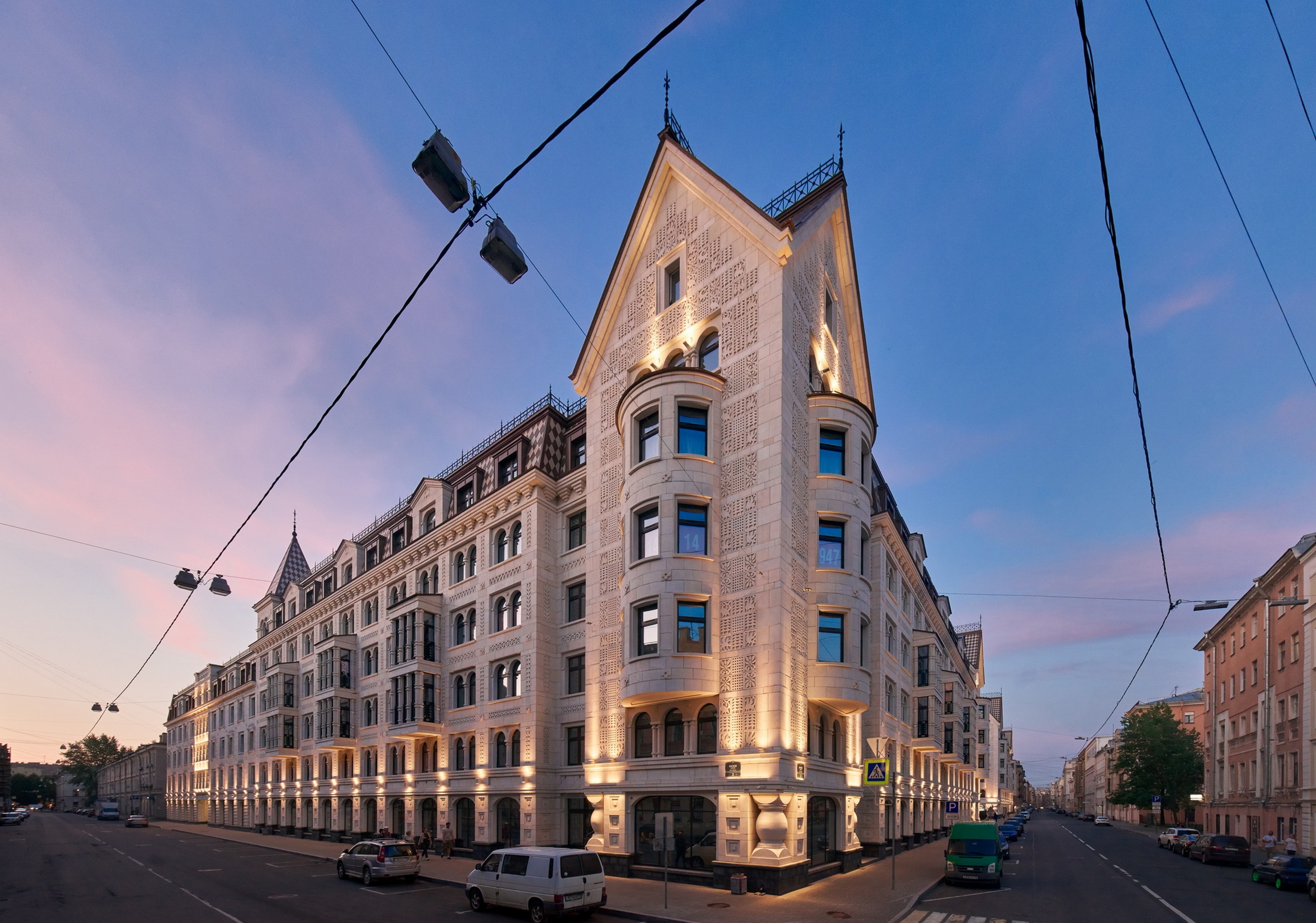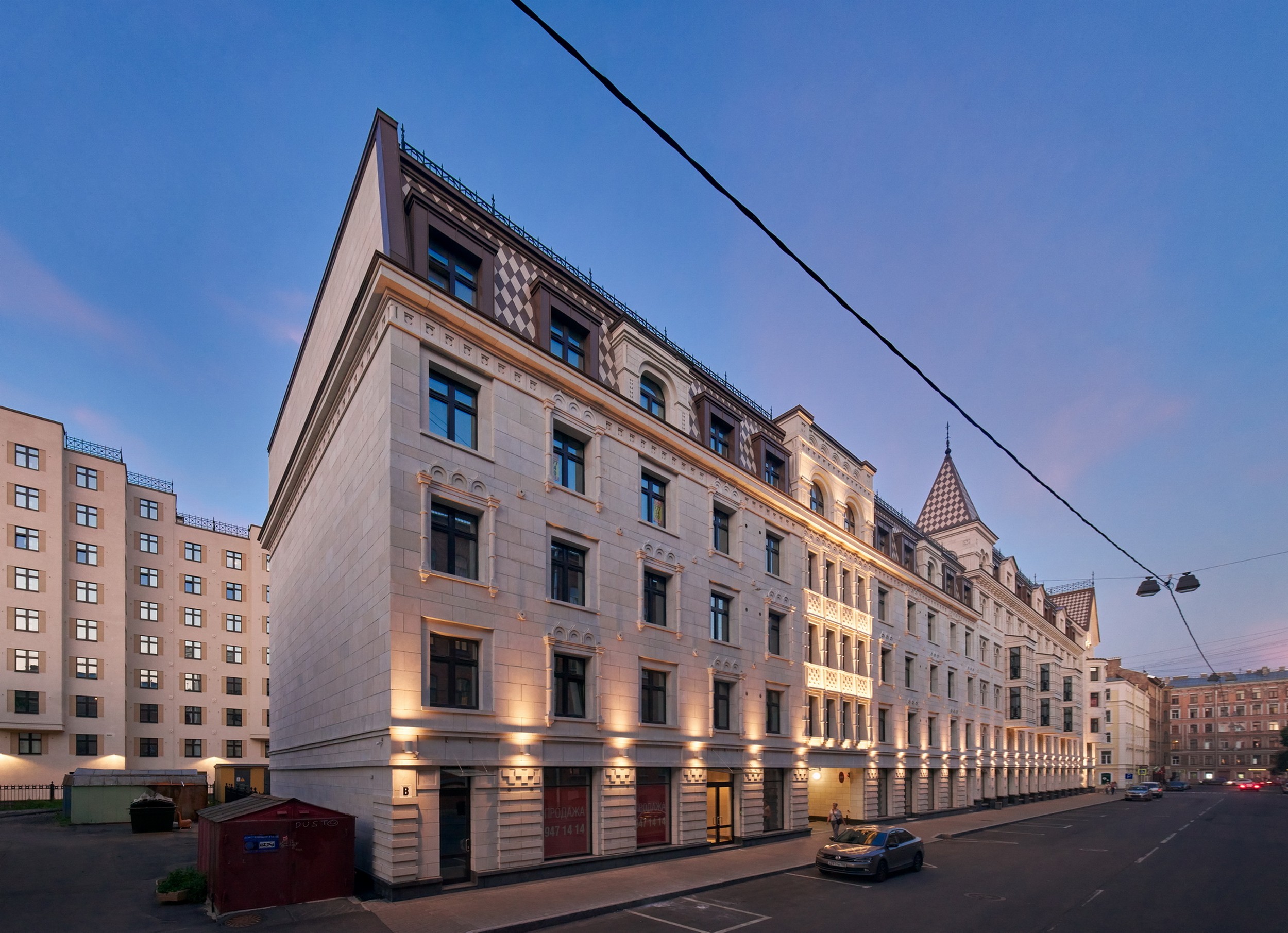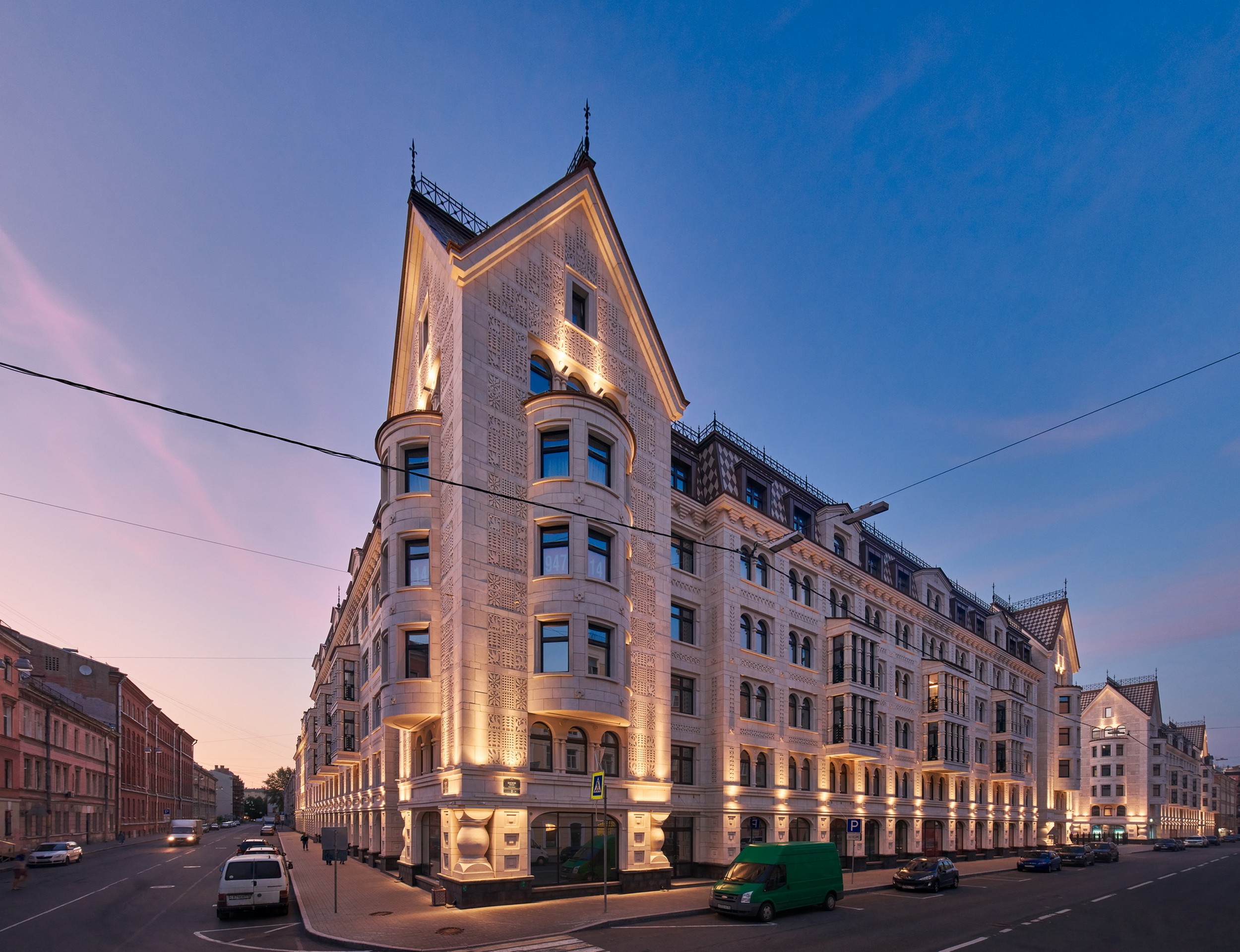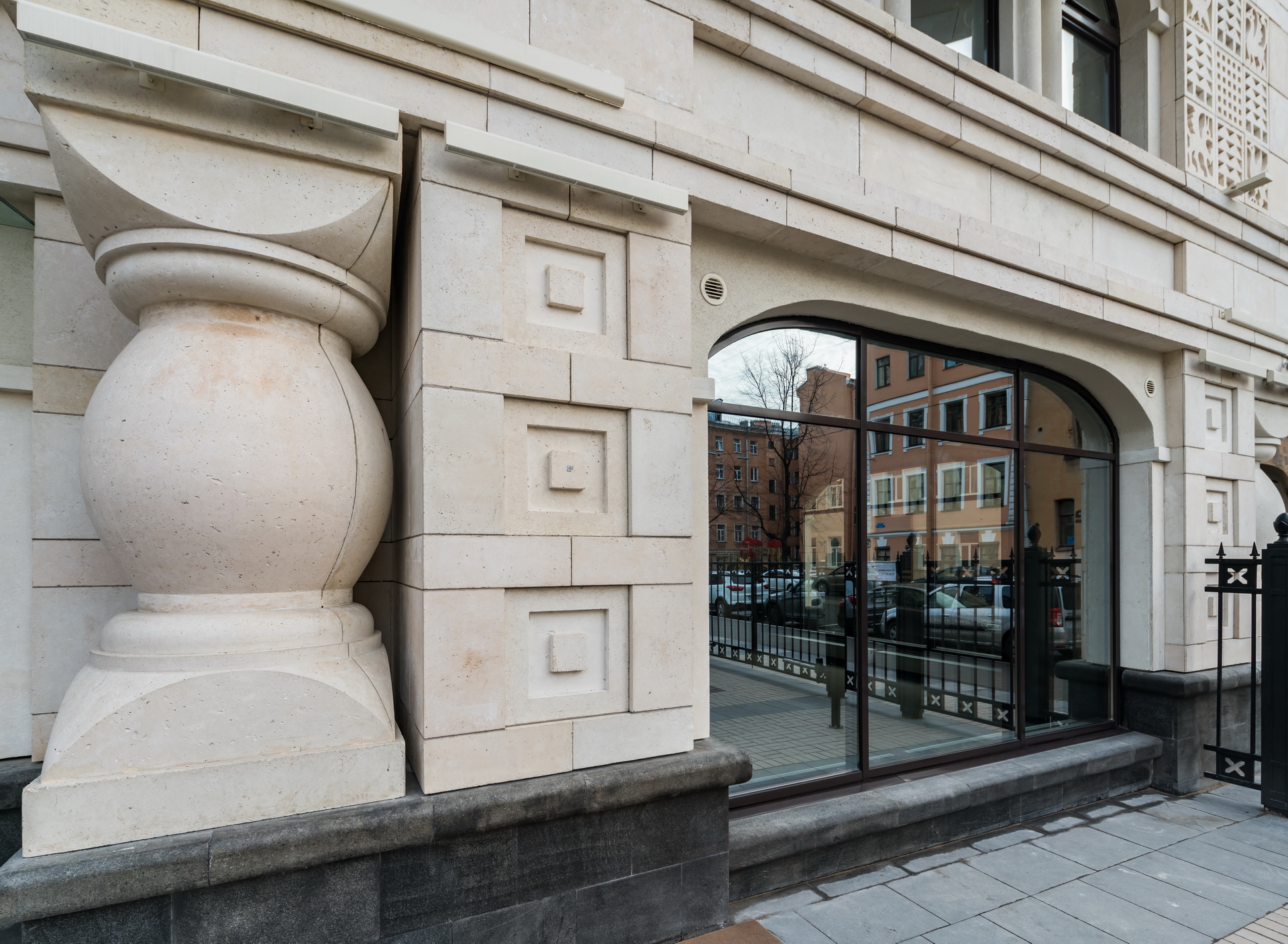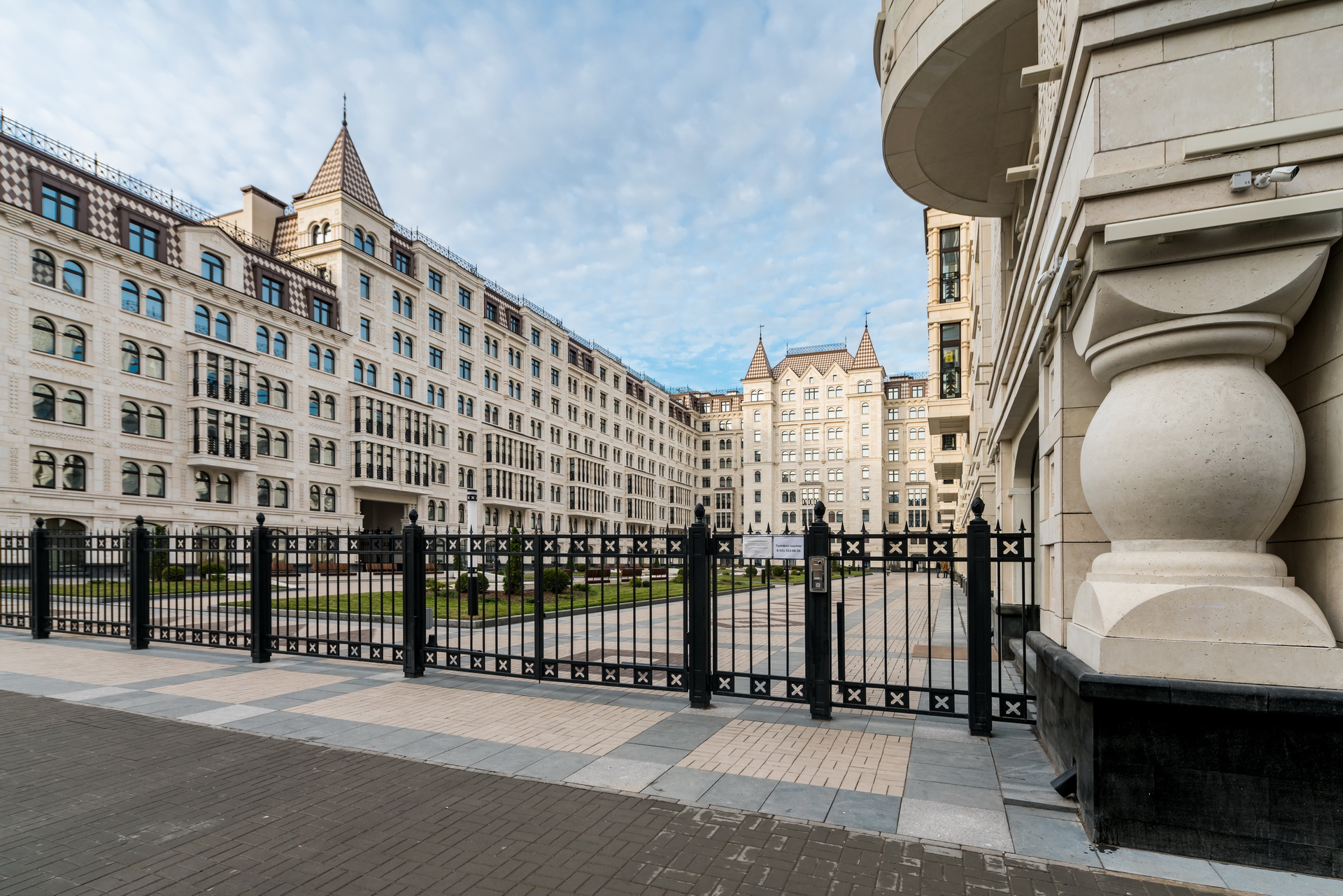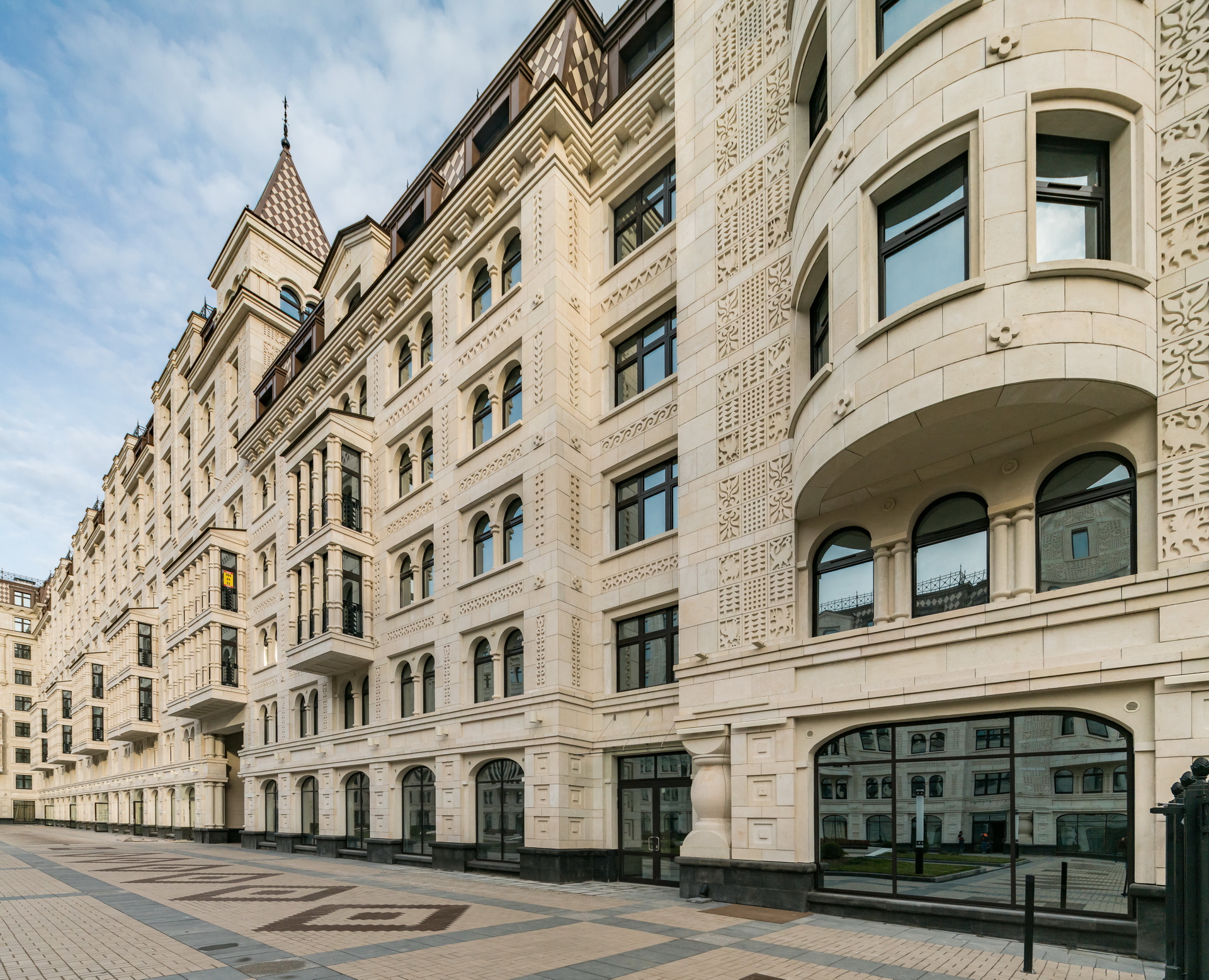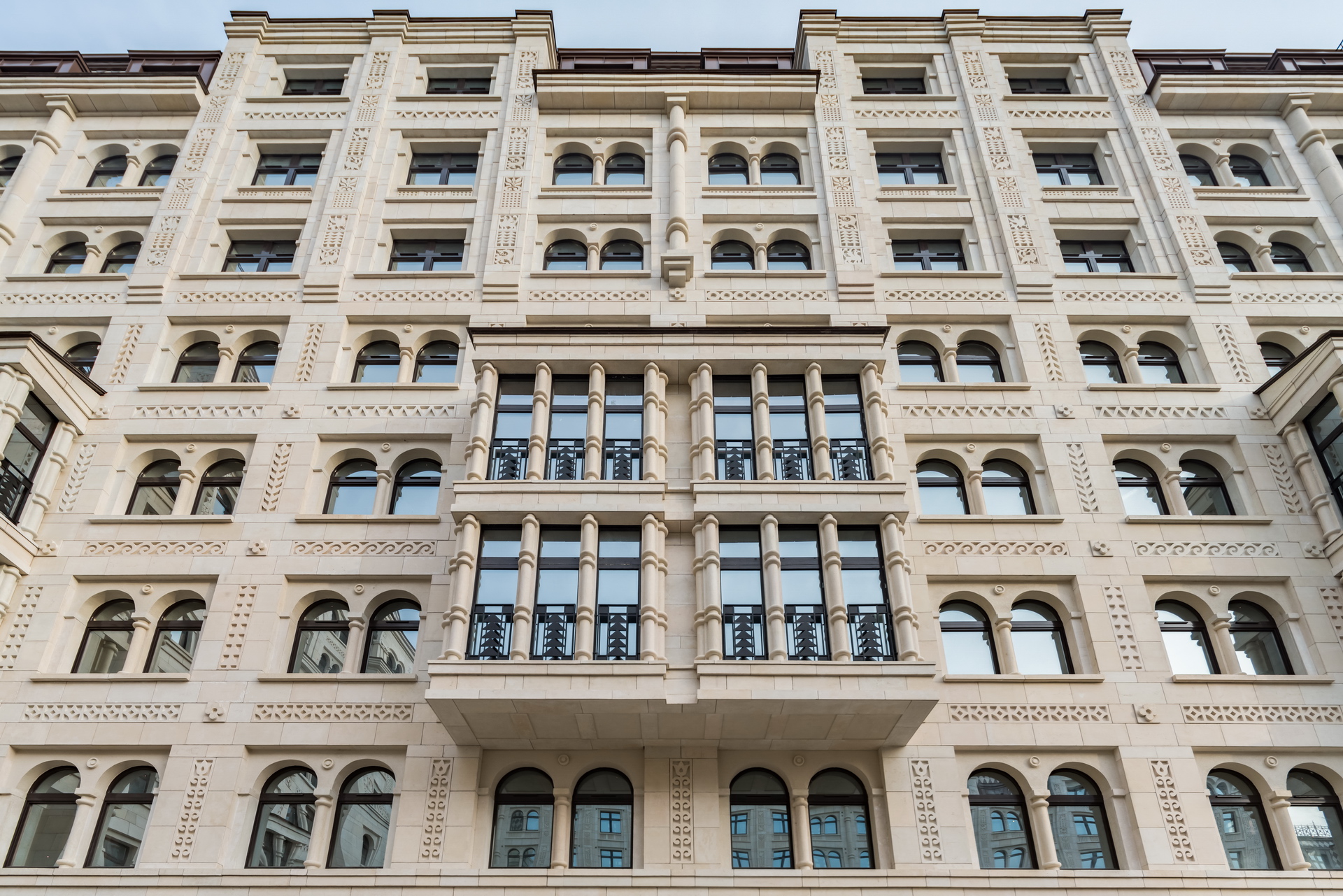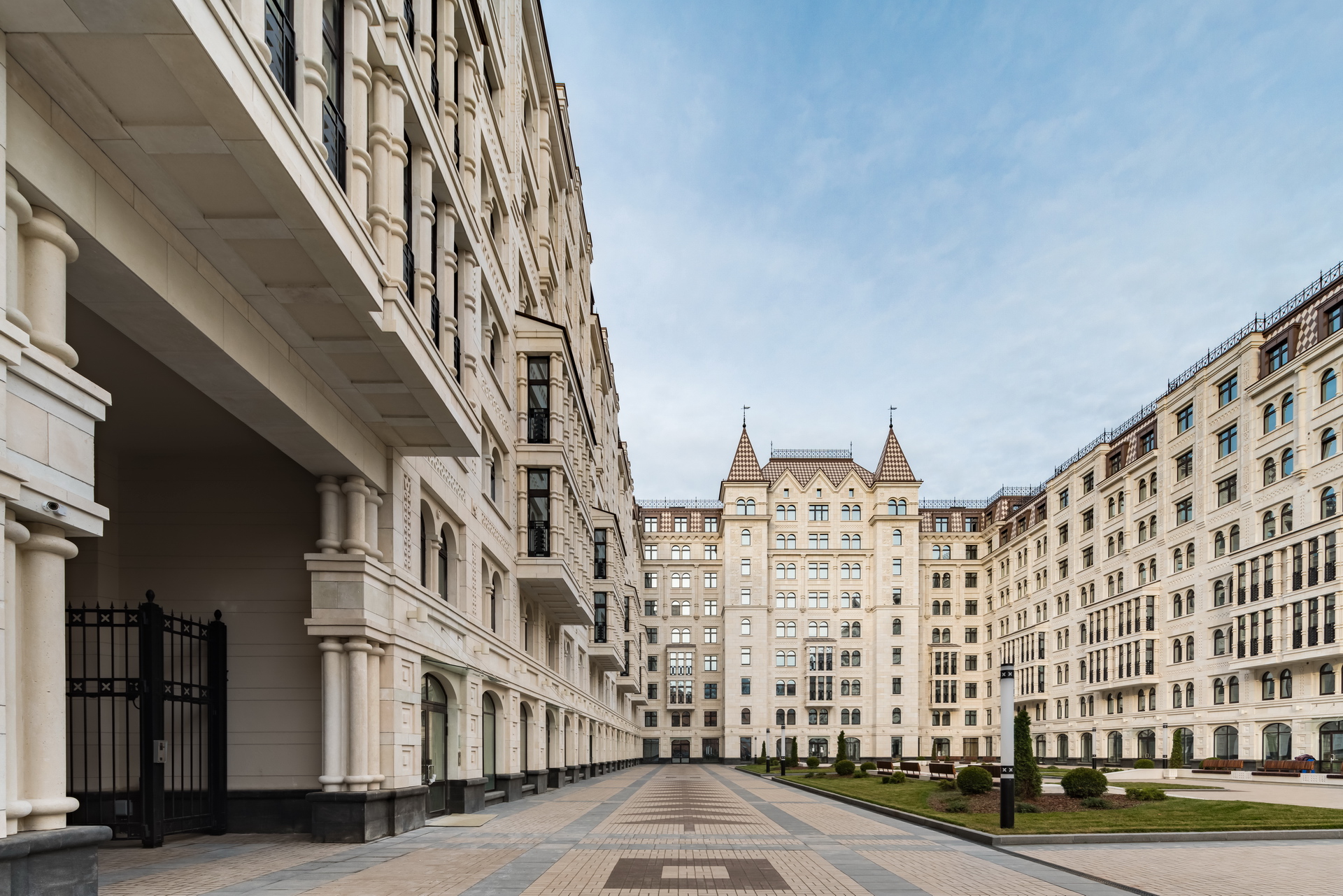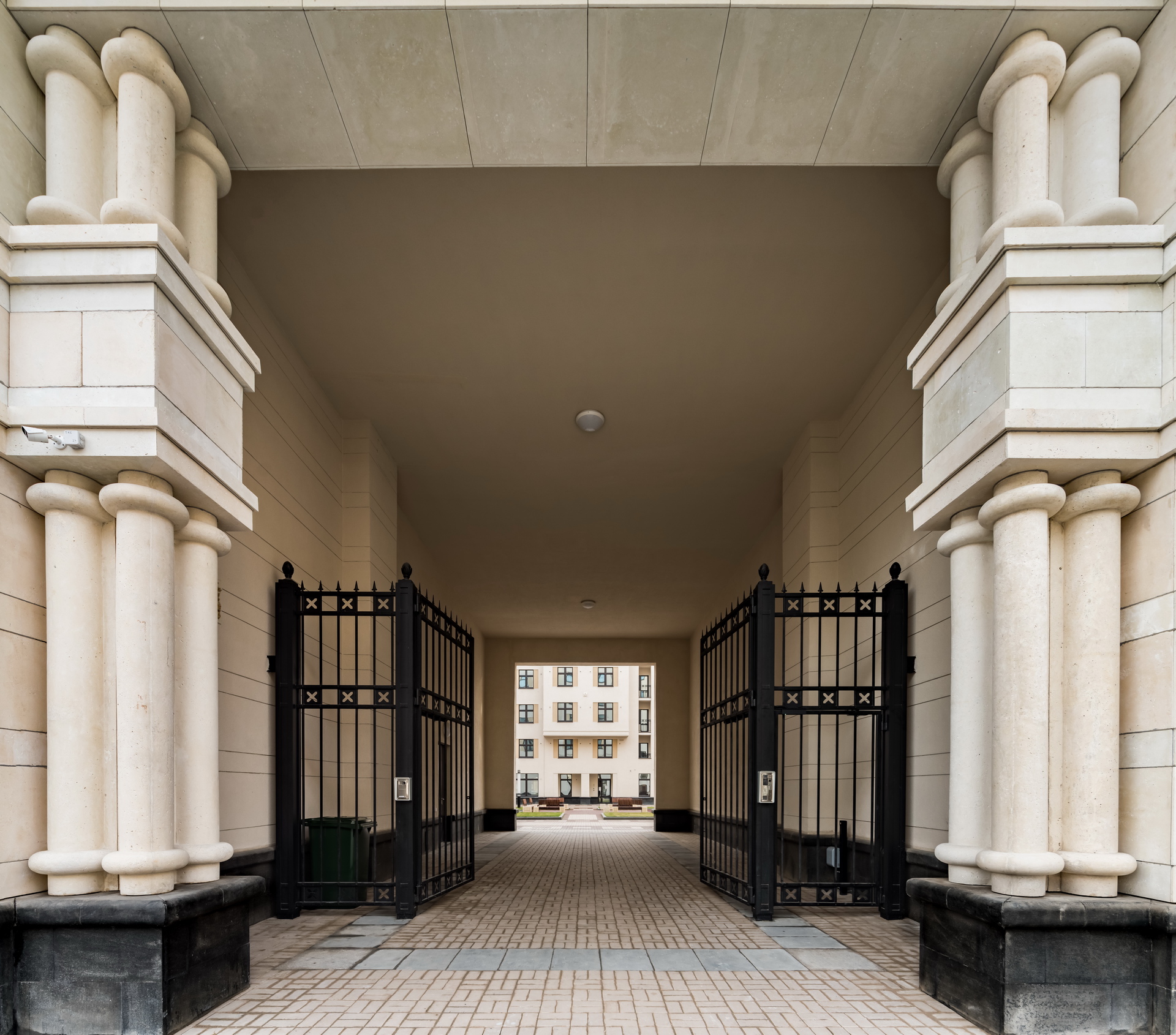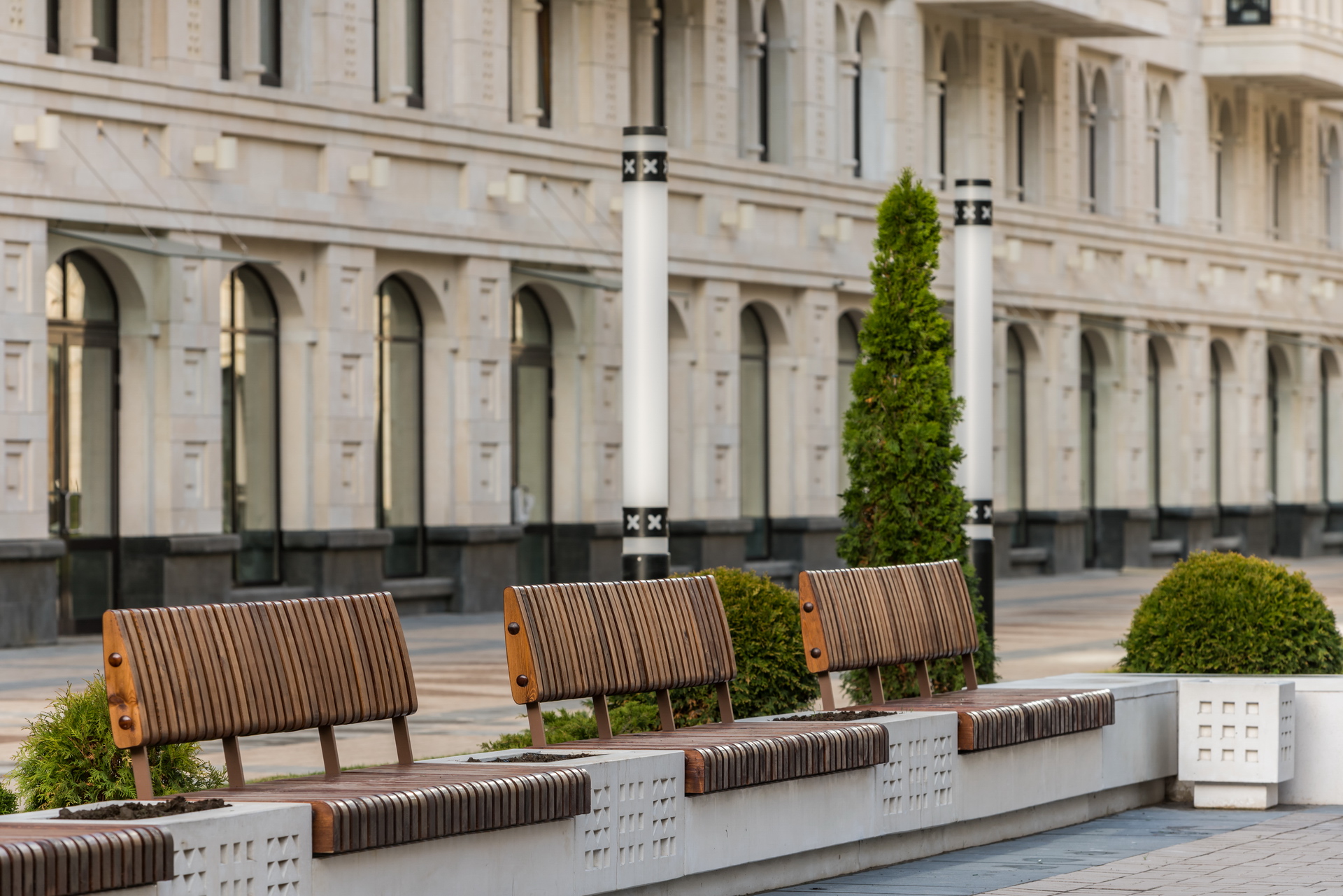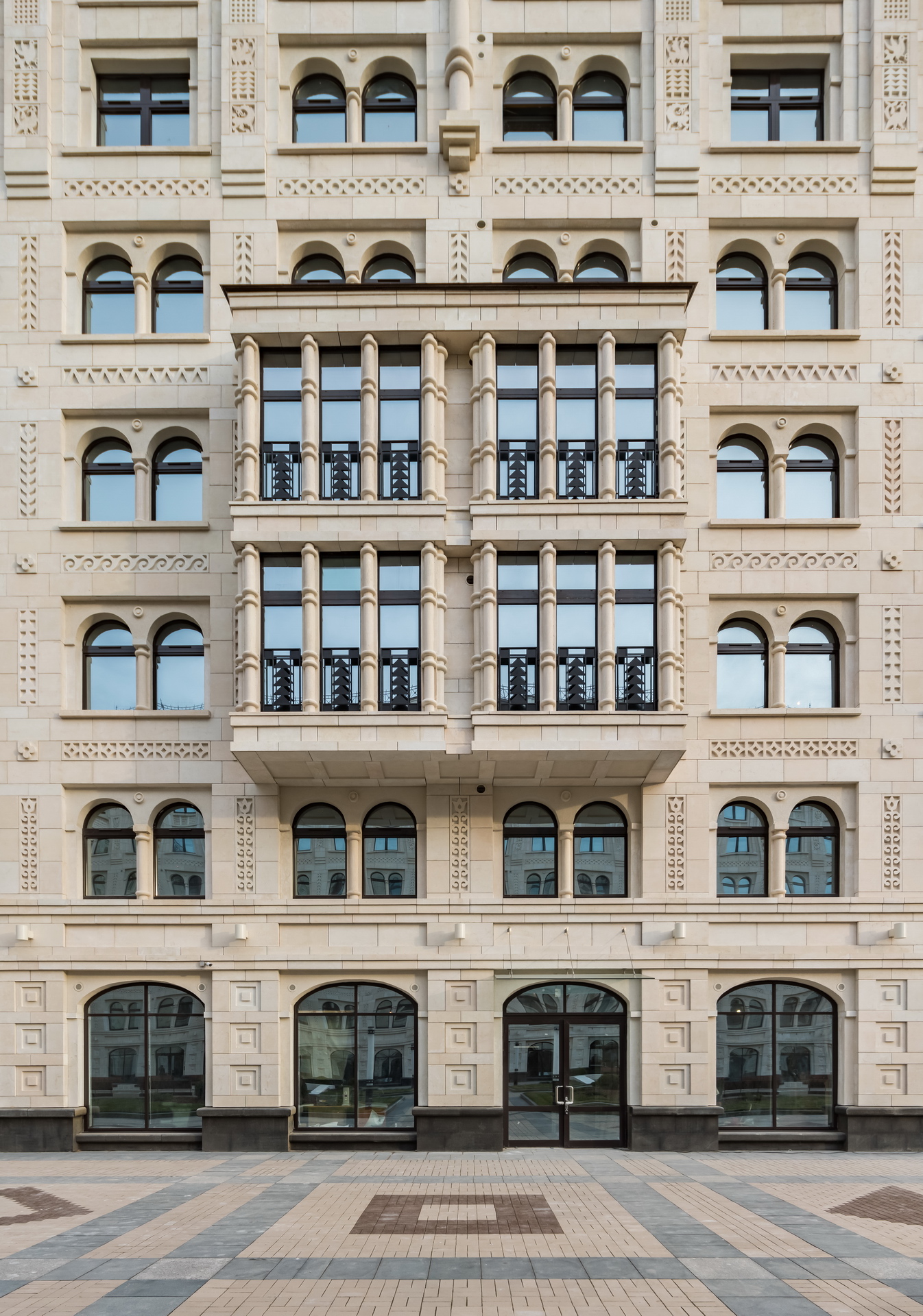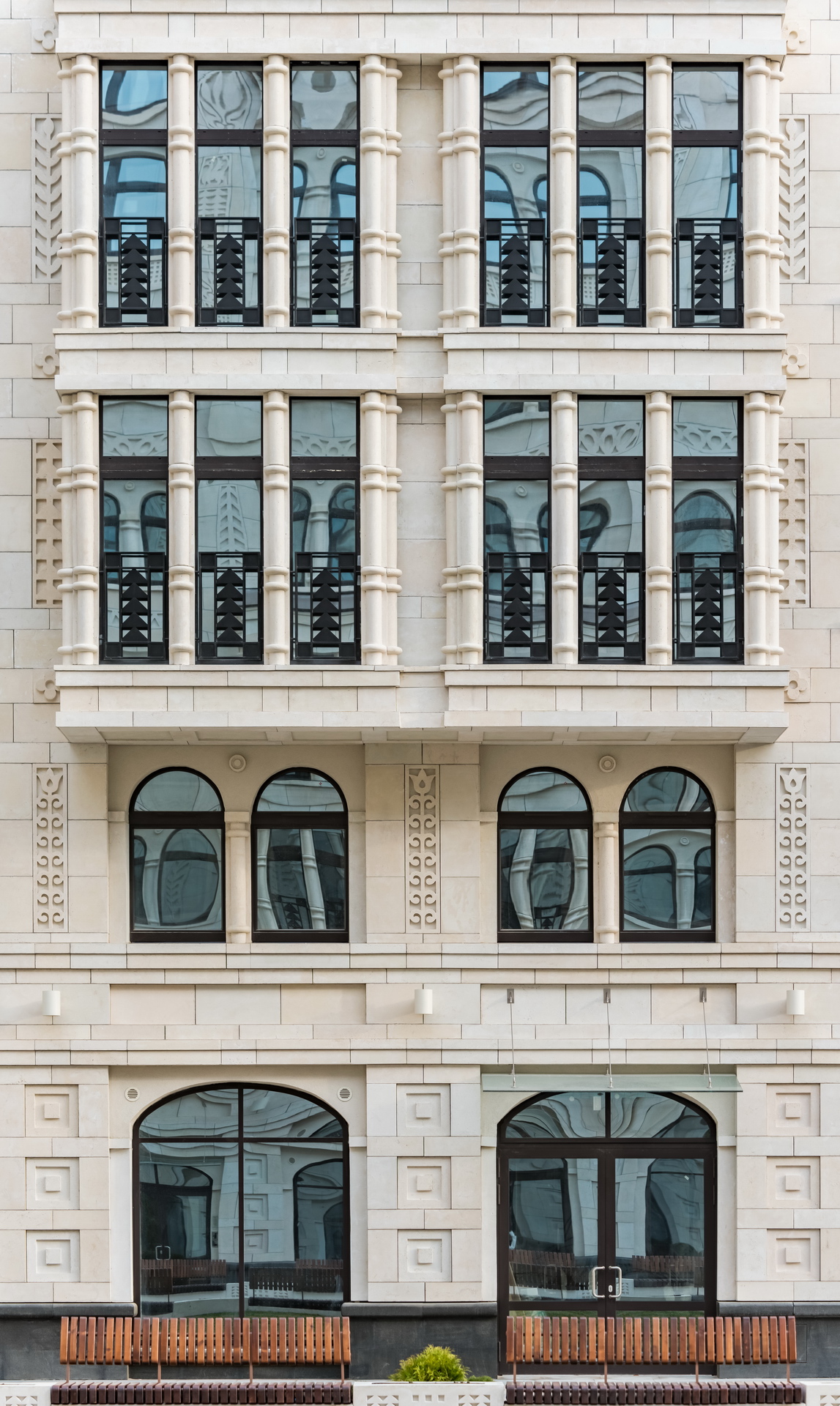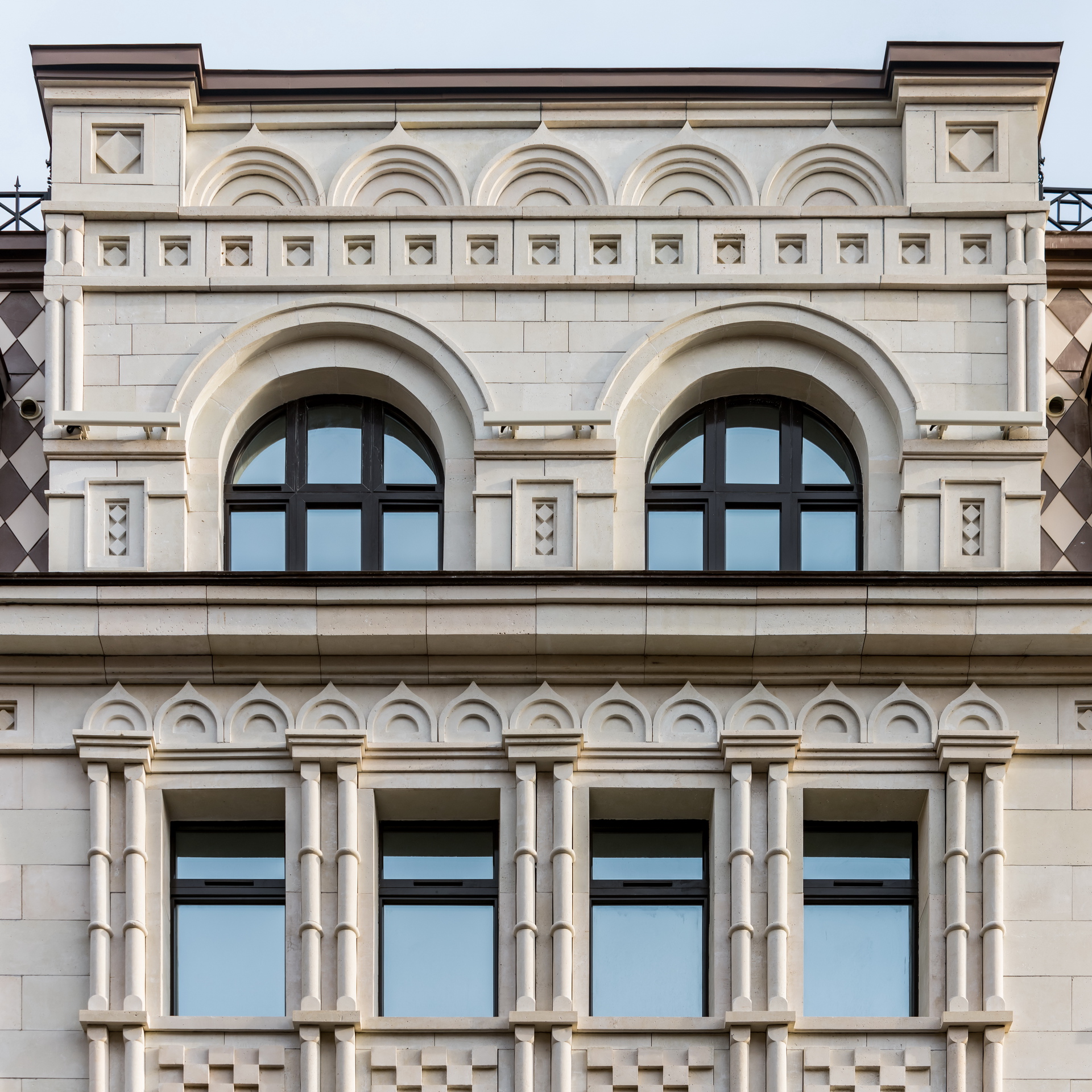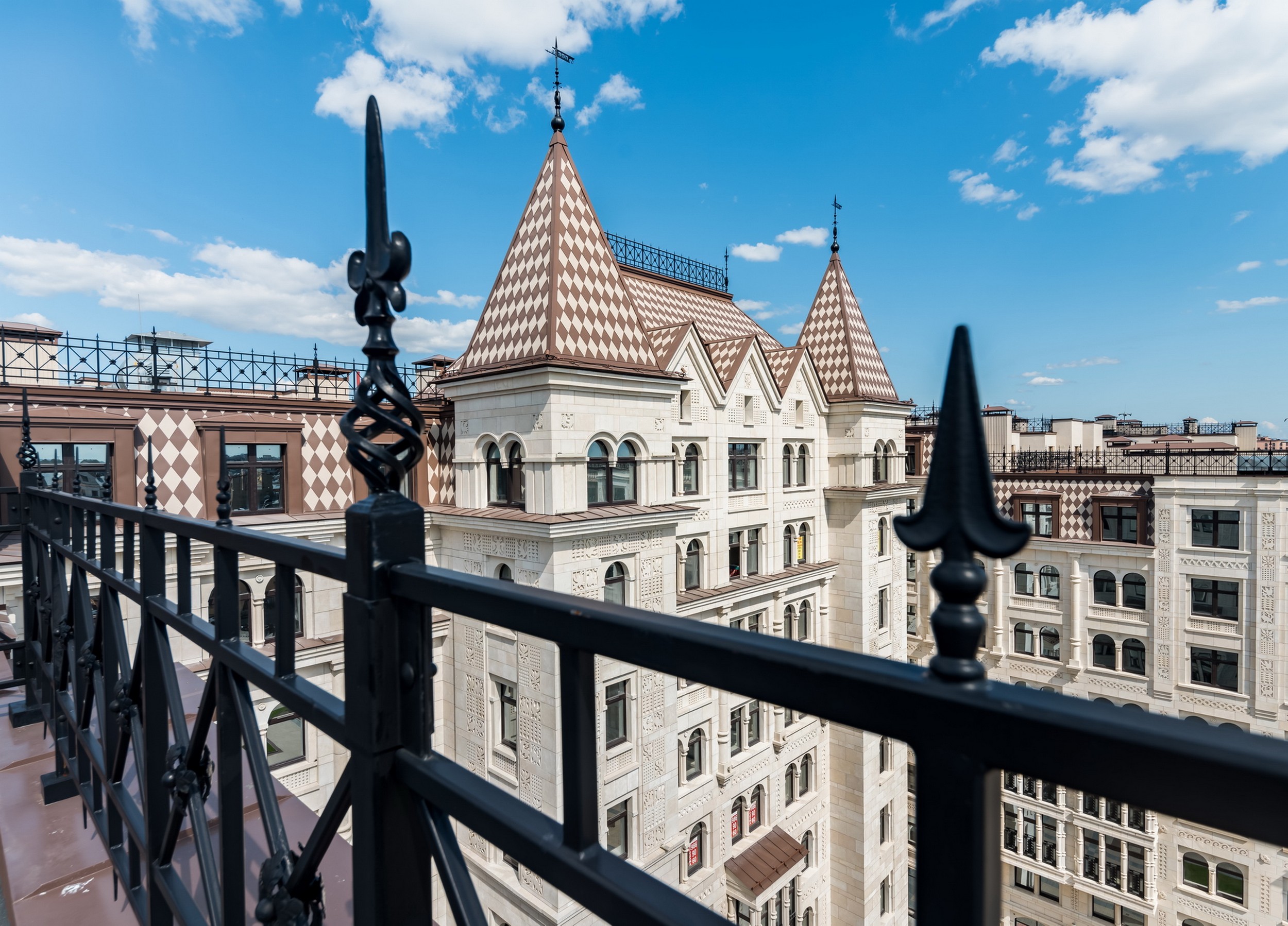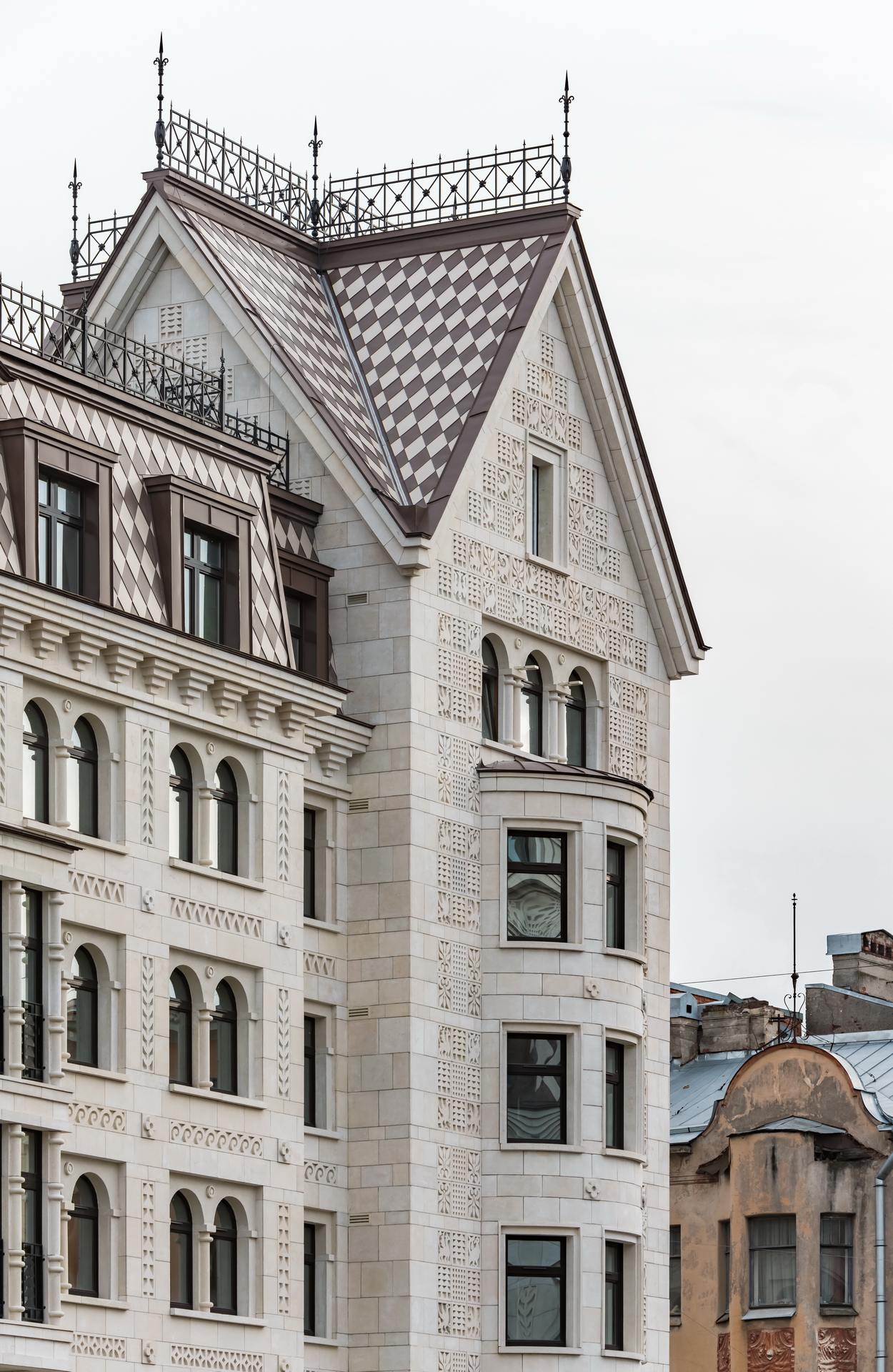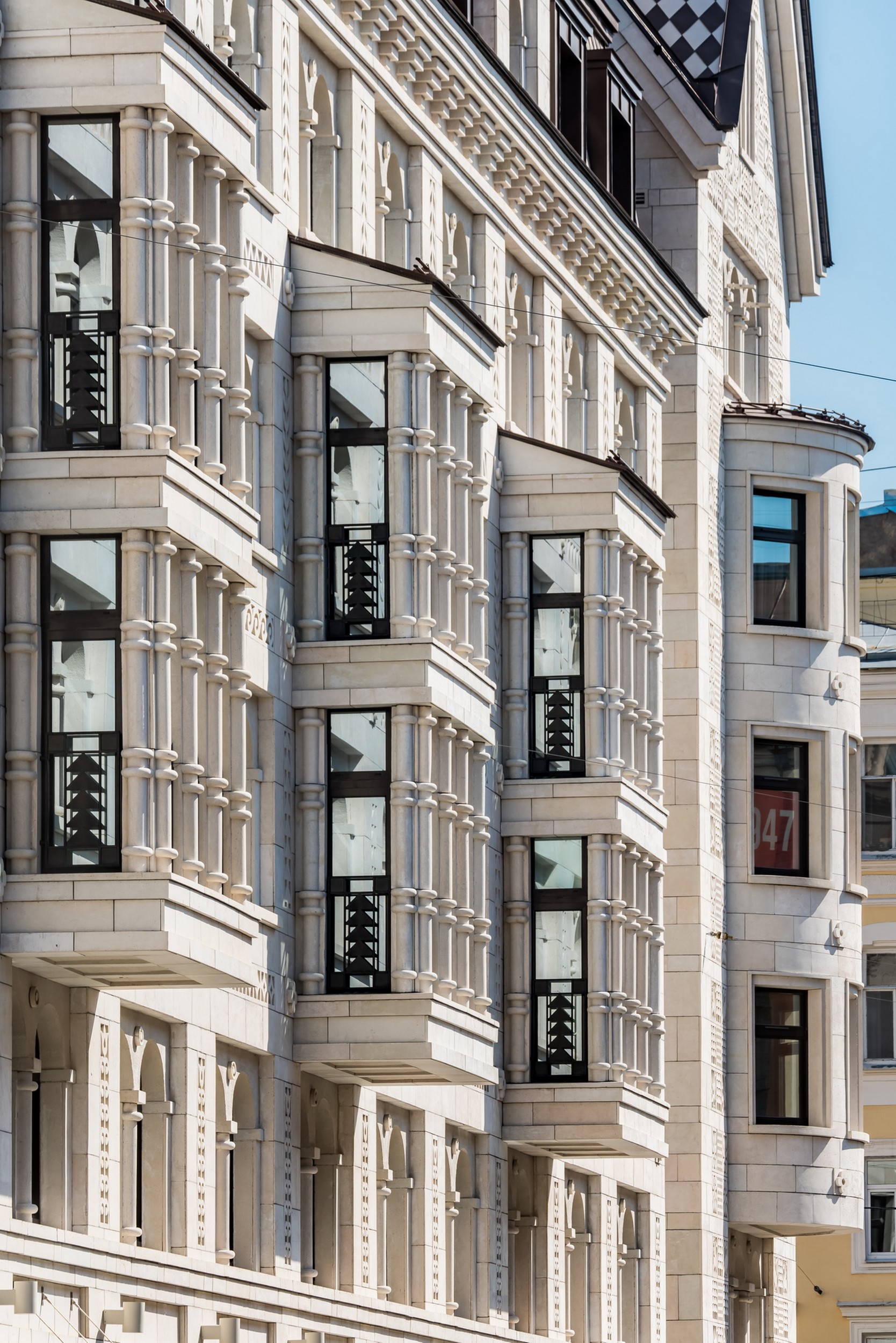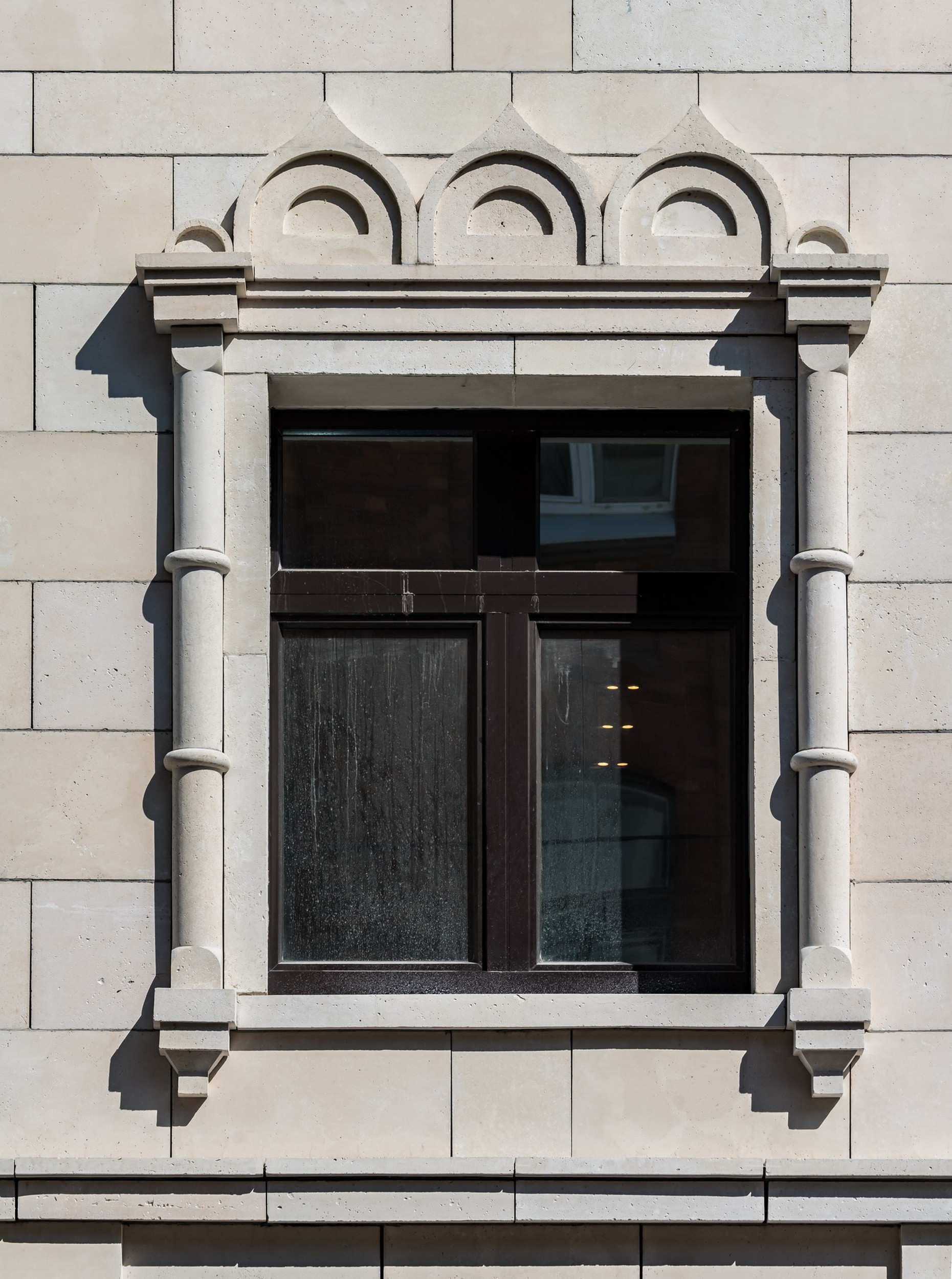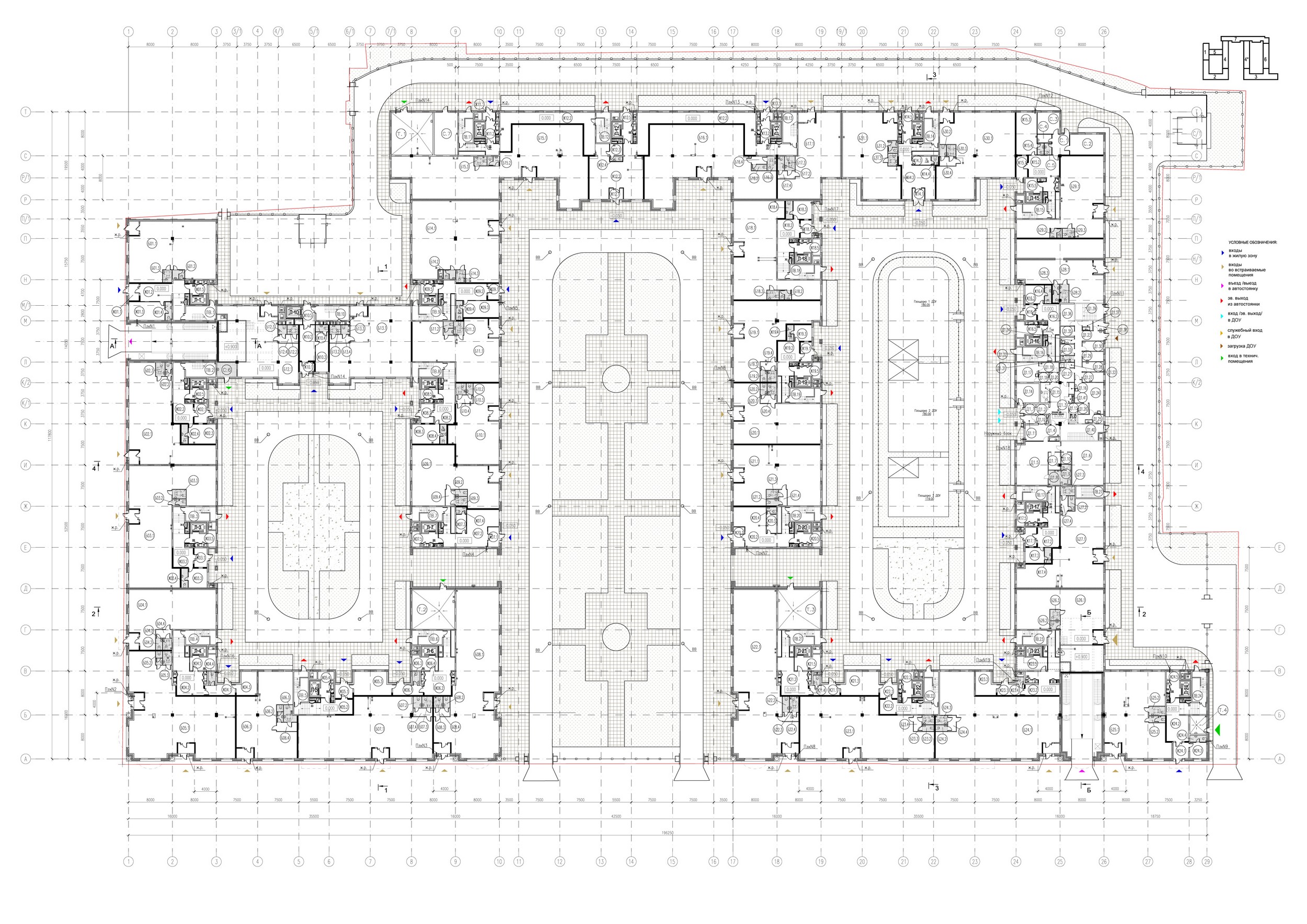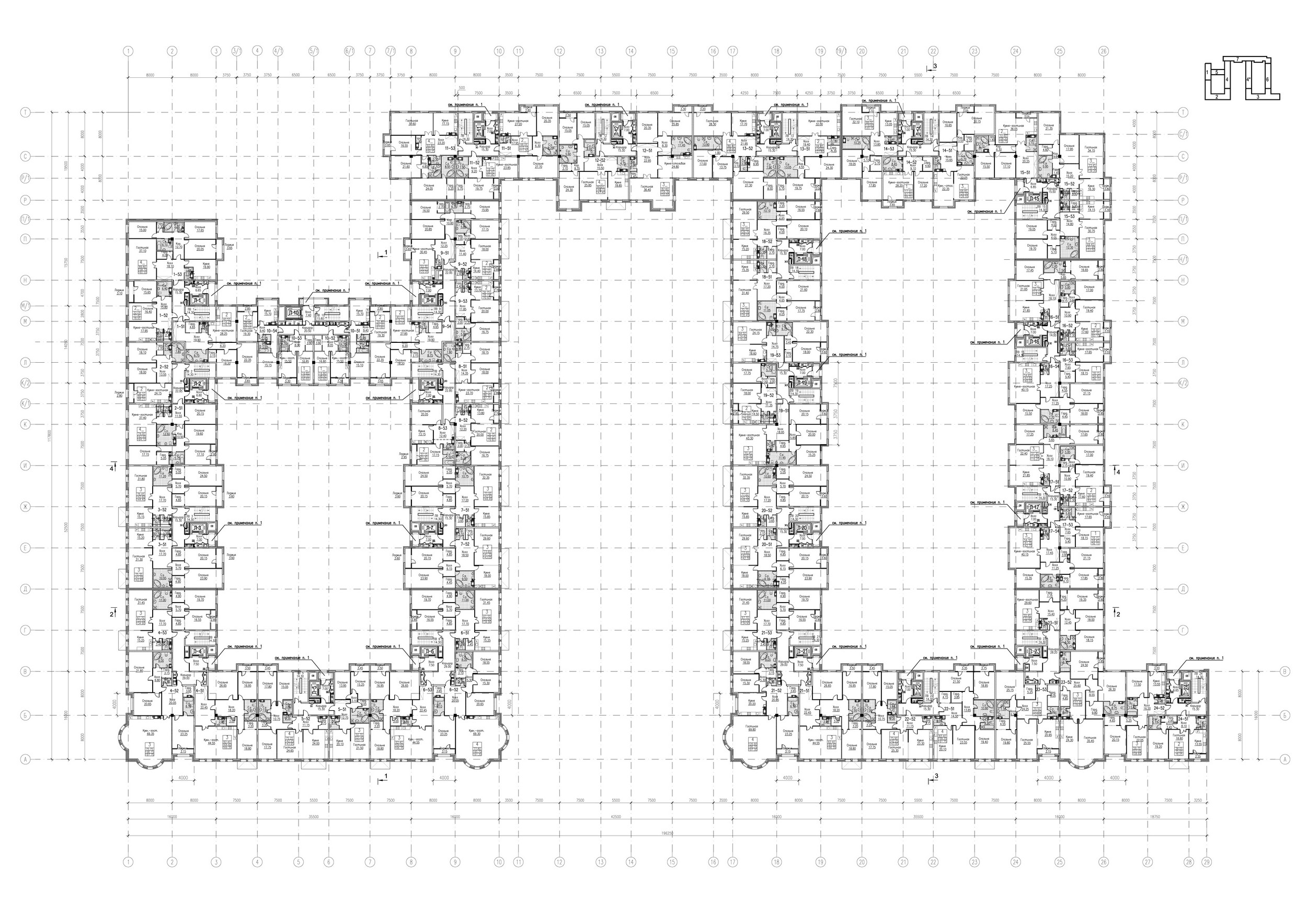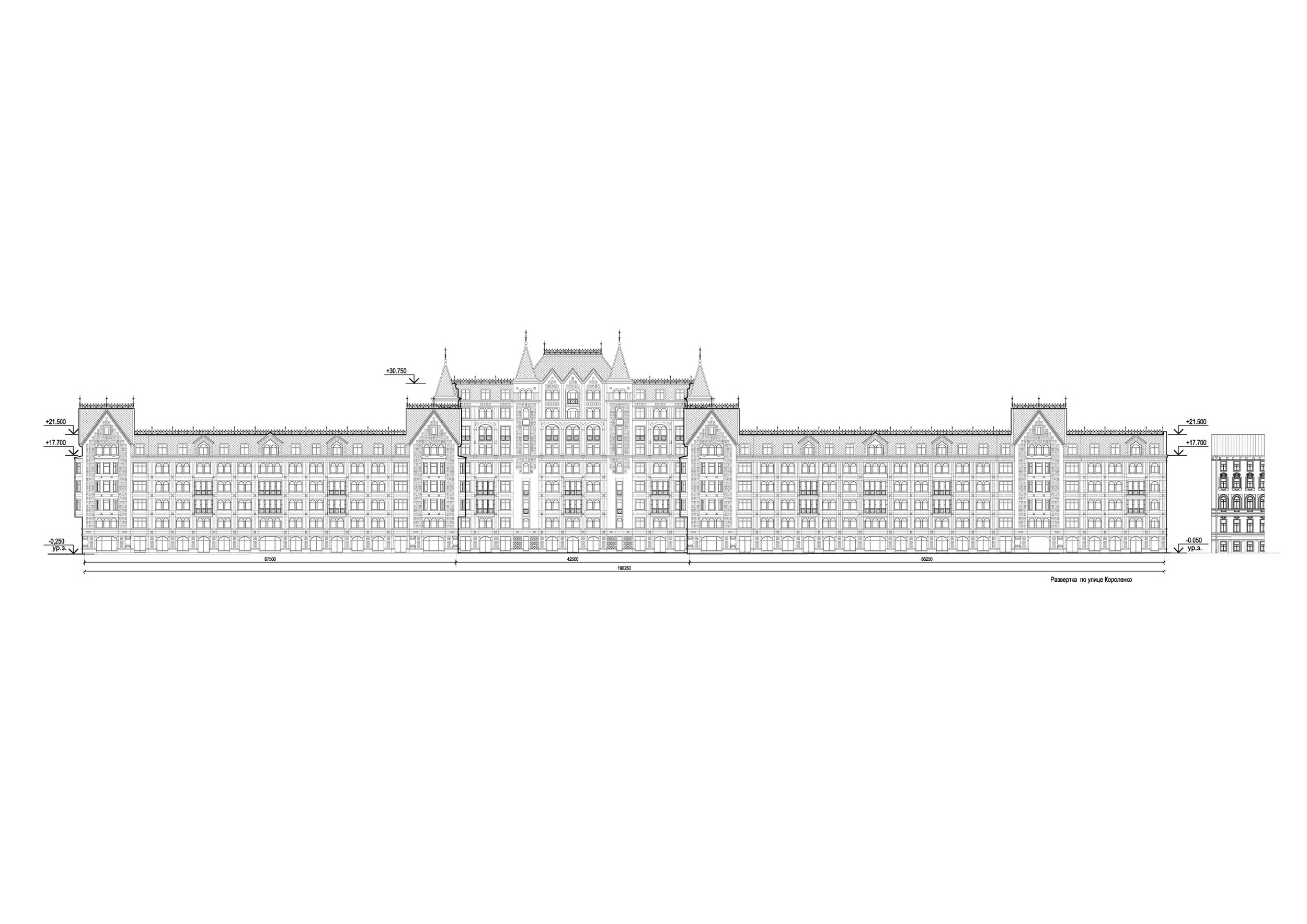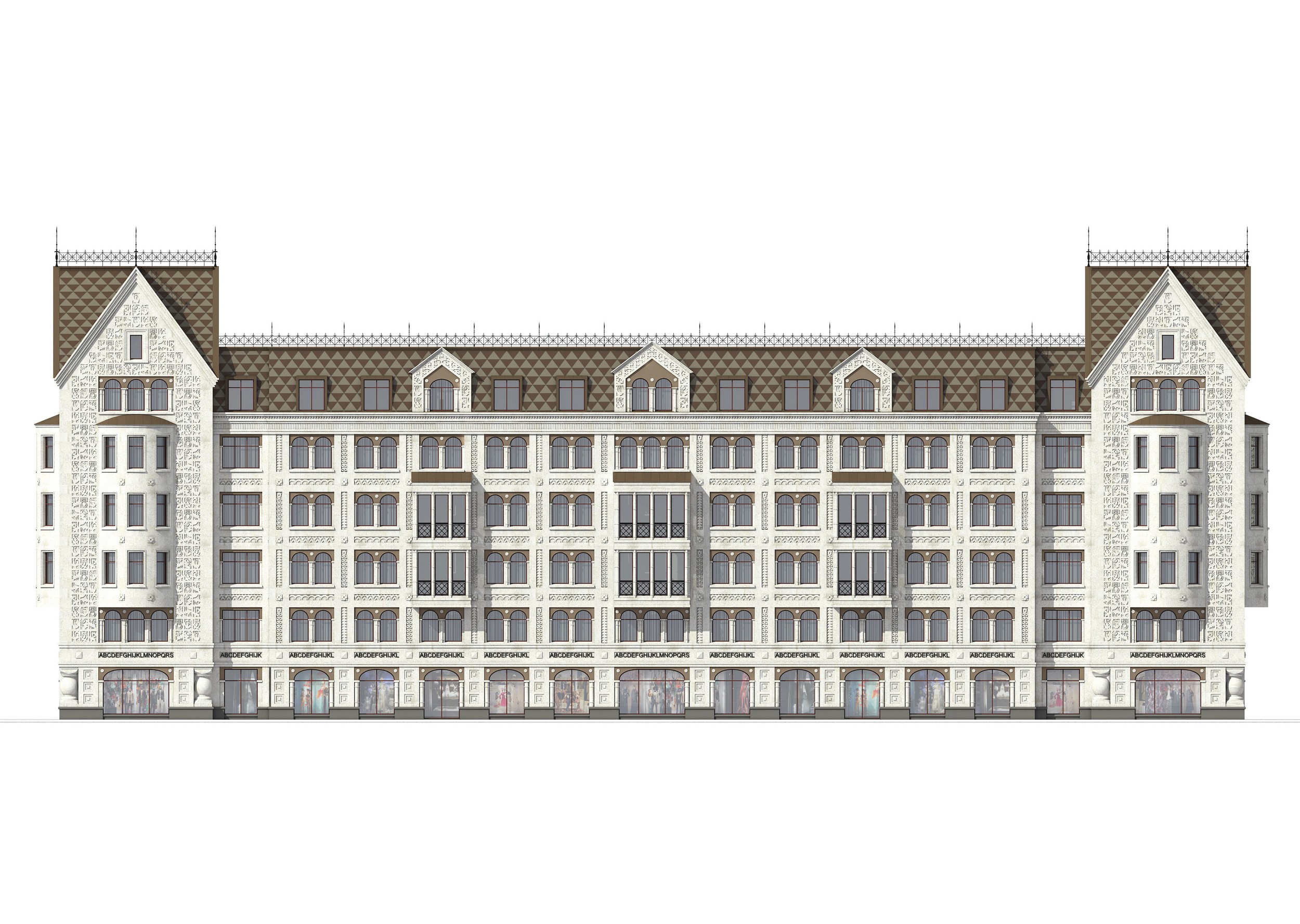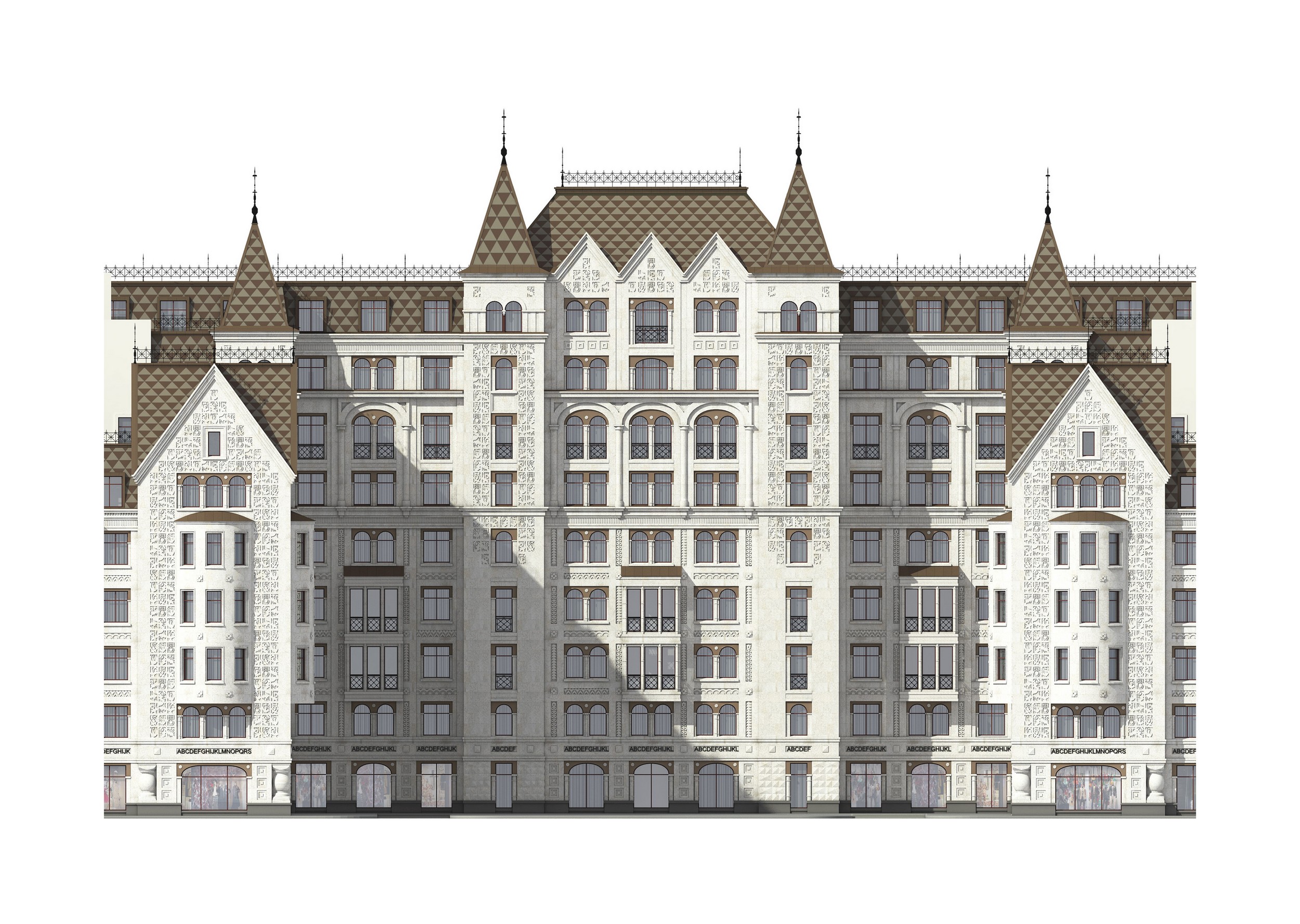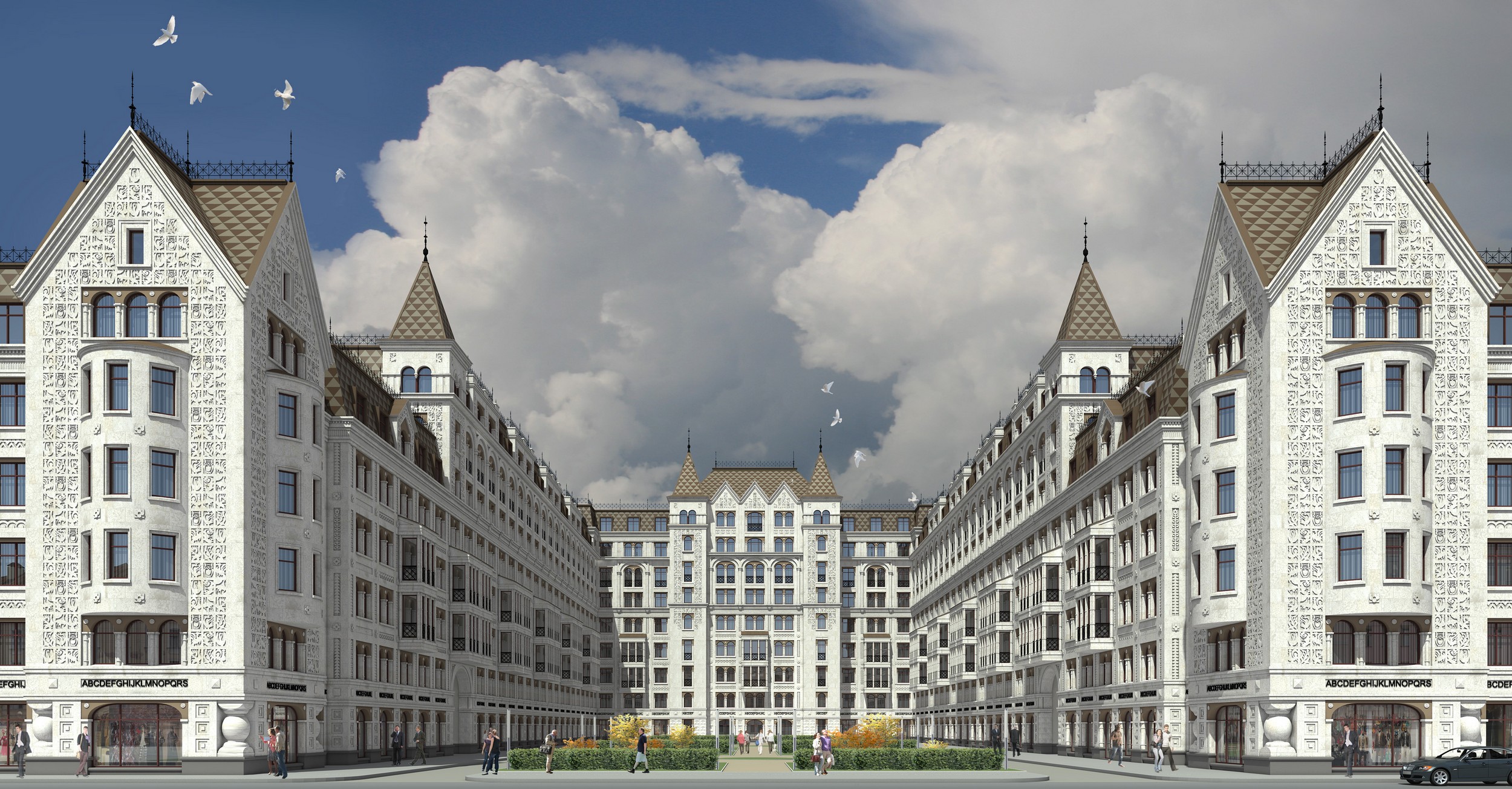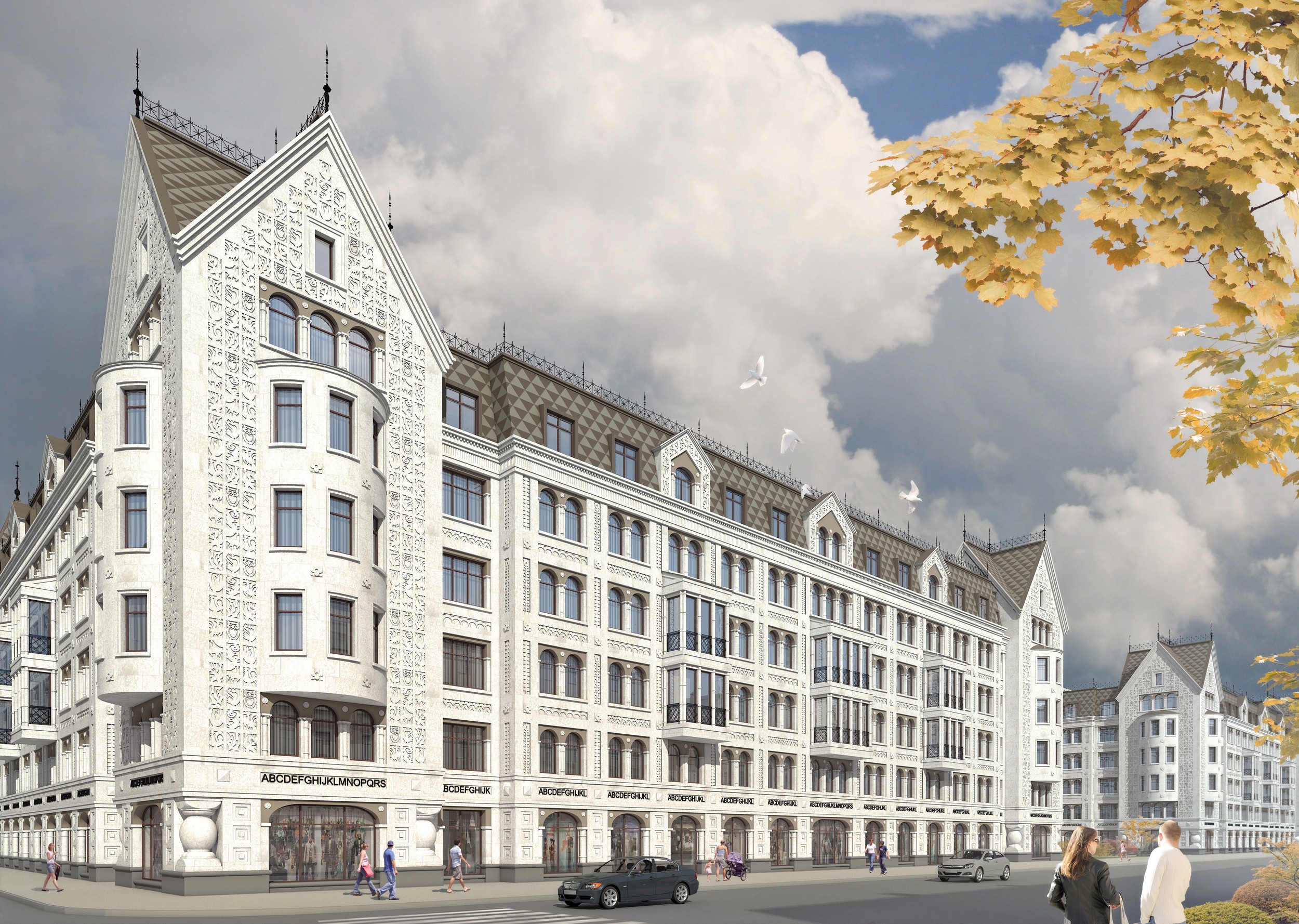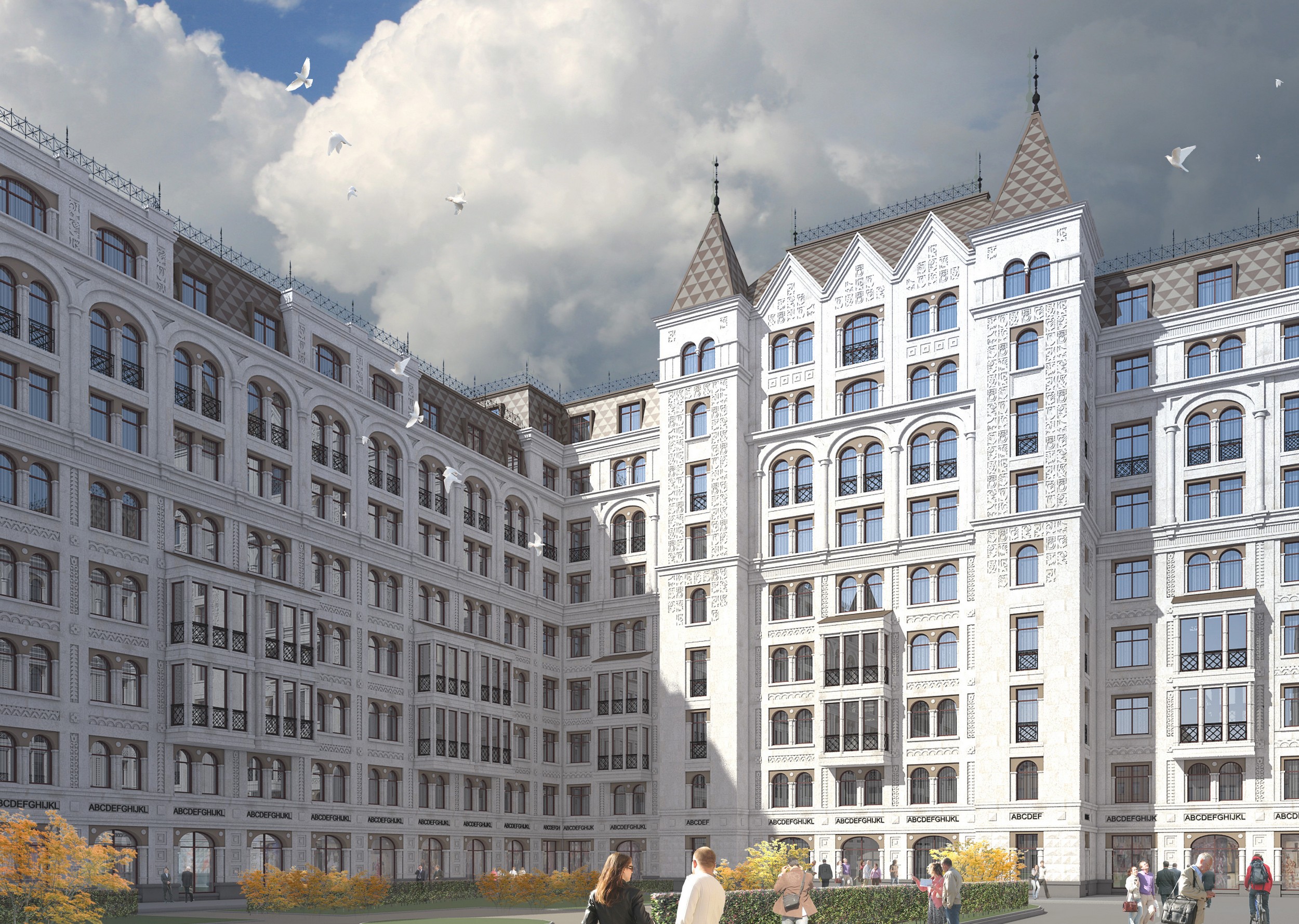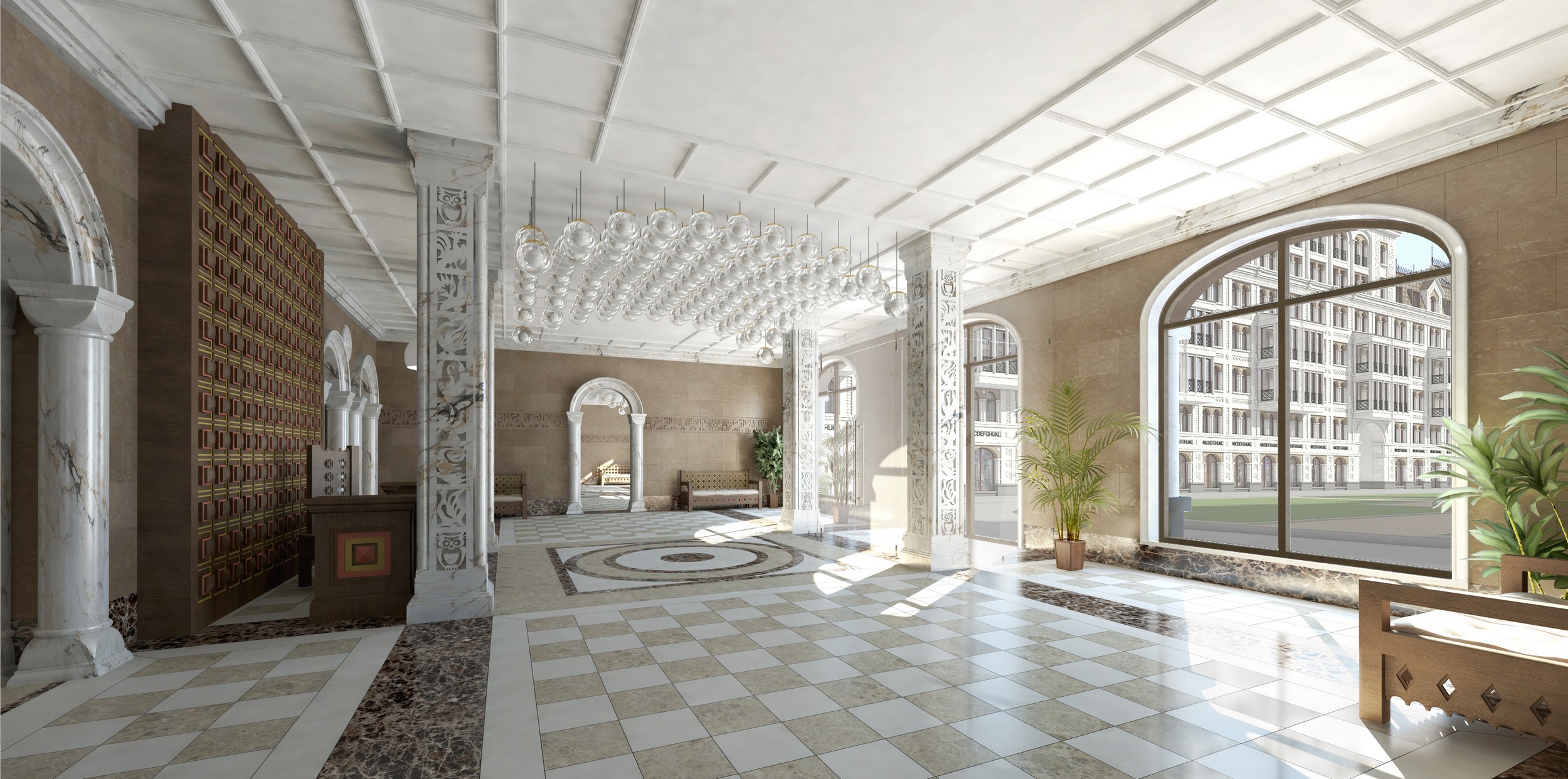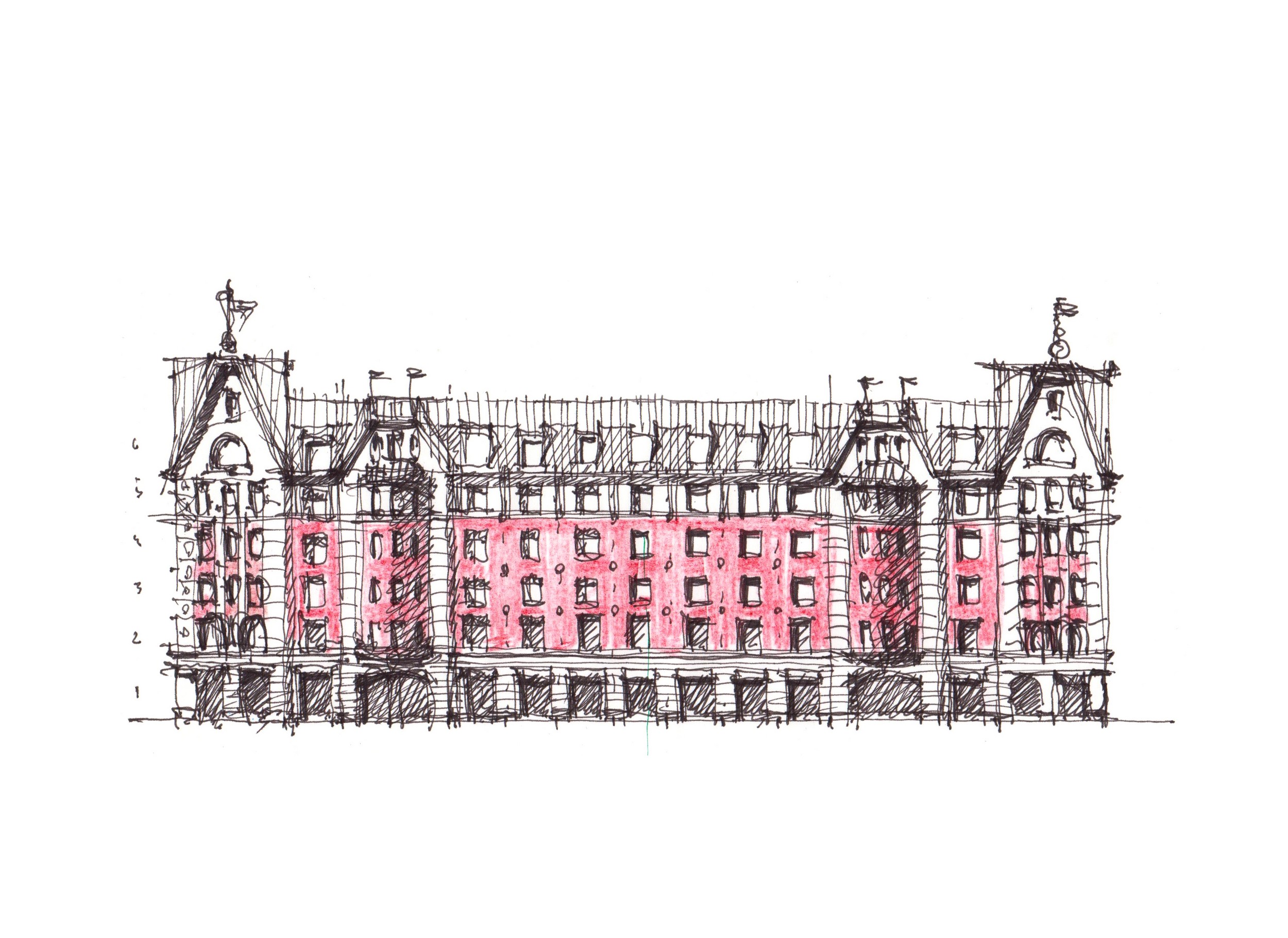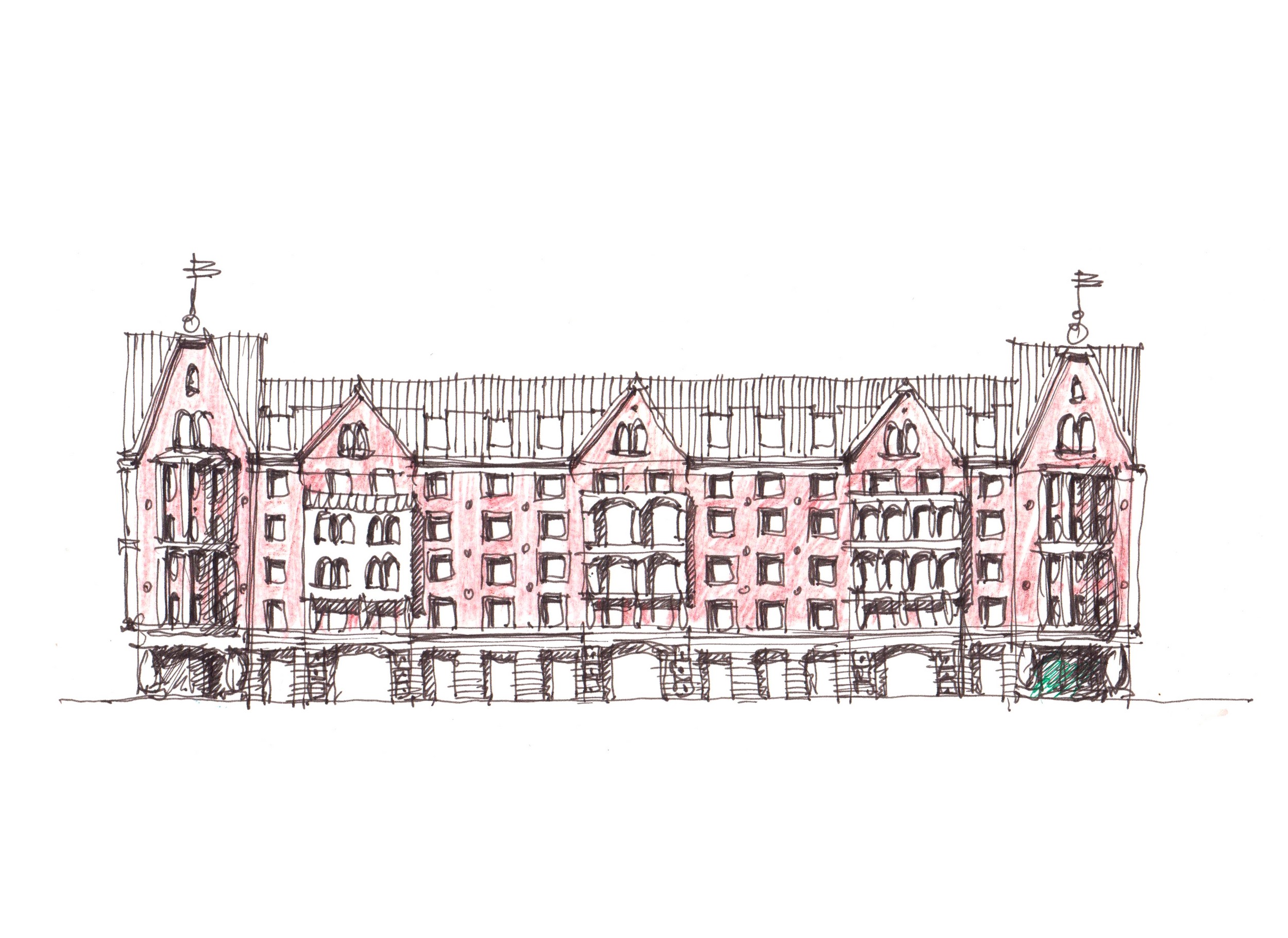Russky Dom continues and rethinks two traditions at once: that of the Saint Petersburg Art Nouveau revenue houses and of the original ancient Russian architecture of the 16th and 17th centuries.
Russky Dom (Russian House) residential complex is located in the historic center of Saint Petersburg, at a T-junction of two streets, and was built as if it were a traditional St. Petersburg revenue house. The 2.4 ha corner site used to be occupied by an automobile park, which has later been terminated.
A meaning-defining element of the whole building arrangement is the cour d’honneur – an open court facing south. It allows to break the monotony of the façade and bring more light into the apartments. This was a move typical of the traditional Saint Petersburg architecture at the turn of the 20th century. Two other yards are closed, as here the entrances to residential stairways are located.
The architectural solutions of the facades and roofings belong to a style which is unusual for the European-looking Saint Petersburg – the Neo-Russian style, also called à la Russ. At the turn of the 20th century, many Northern European countries were in a search of a national style identity within the Art Nouveau framework, Russia not being an exception. A building in this style is located next to the Russky Dom, which also was a source of inspiration.
The Neo-Russian style rethinks the traditional Russian architecture of the times before the rule of Emperor Peter the Great, that is up to the beginning of the 18th century. It is not order-based, it is genuine and does not refer neither to the Ancient world nor to the classicism with their iconic columns and capitals. Instead, the Neo-Russian style offers volumes of different height tied into a single arrangement, a picturesque multitower roof outline, pointed roofs, carved patterns on the façades. Animal figures in ornaments and wrought-iron elements also refer to the national tradition and are inspired by ancient Russian ornaments.
Architectural concrete used in the façade finish both reminds one of the white stone of the Russian noblemen residencies and emphasizes a sense of solemnity, or even fabulousness.
Thus, it is possible to say that Russky Dom continues and rethinks two traditions at once: that of the Saint Petersburg Art Nouveau revenue houses and of the original ancient Russian architecture of the 16th and 17th centuries. At the same time, the building embraces the city’s architectural environment in a delicate way, without disturbing it neither in terms of style nor scale. This is particularly important, the whole historical center of Saint Petersburg being a UNESCO World Heritage Site.


